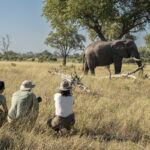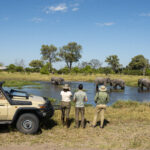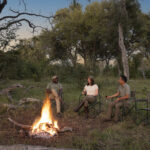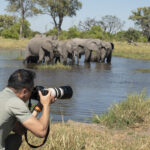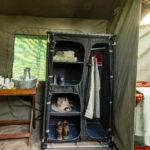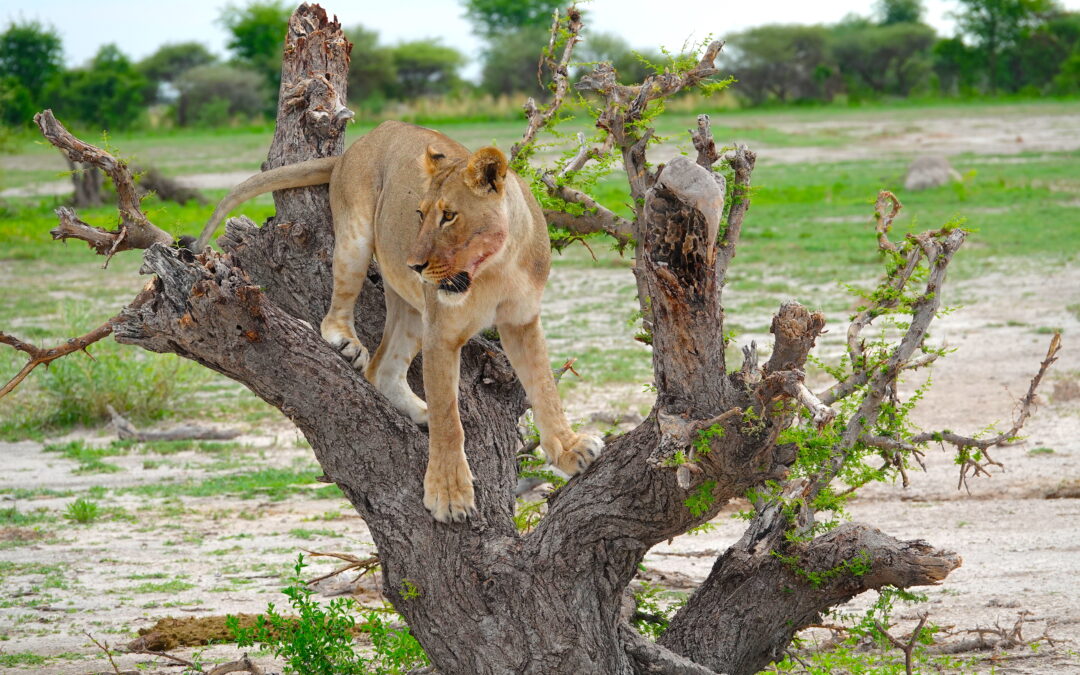
Jan 29, 2020 | Adventure Safari, Brave Africa Safari, Safari Tips
One of the first questions we get whenever we talk to someone new to safaris is, “Is an African safari safe?” We immediately assure them that it’s very safe, but we know that the word of safari enthusiasts may not be as reassuring as you would like.
So, to help you determine for yourself if an African safari is safe, we’re going to delve into the main arguments we hear over and over again. (more…)
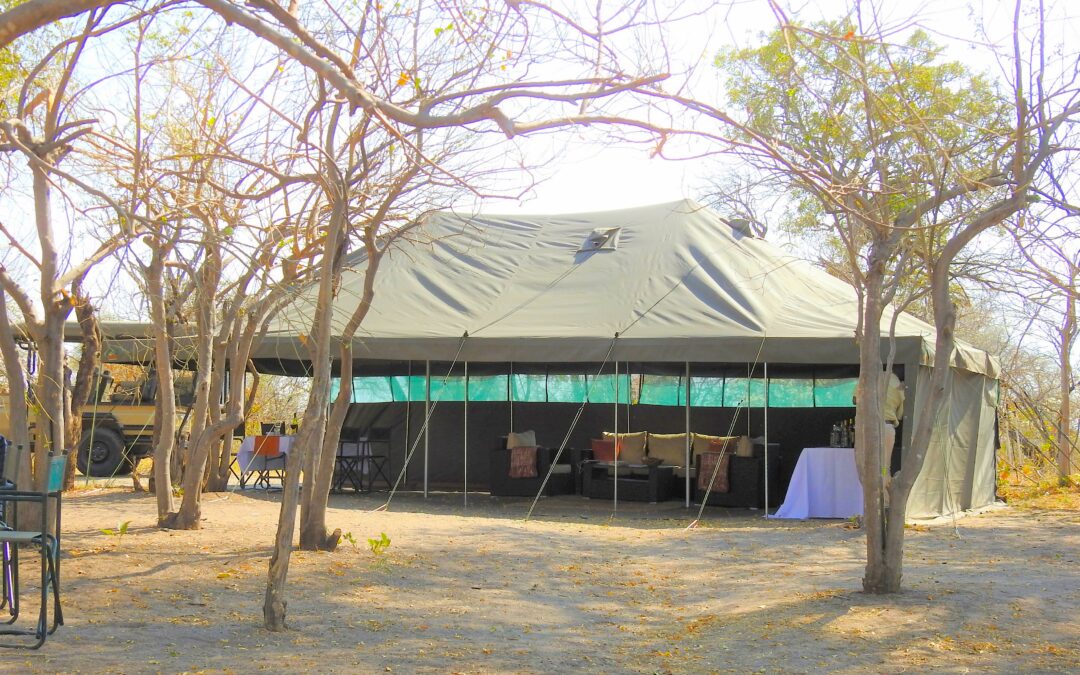
Nov 29, 2019 | Brave Africa Safari, Most Popular Blogs, Safari Tips
Before you go on a safari in Botswana, you have to do your research. Safaris are not cheap, and the last thing you want to do is try to save money and end up with a sub-par experience and a safari camp or lodge that’s far below your expectations.
The problem is that there’s both too much and too little information out there. We’ve been where you are and have spent countless hours (days!) online trying to figure out what it’s like to go on an African safari.
And trying to figure out where to stay? Forget it!
You might as well just close your eyes and pick an African safari lodge or camp at random. After all, they can’t be that different than each other. But that’s where you’re wrong.
Every Safari Accommodation is Different
While both safari lodges and safari camps offer incredible experiences and can share many of the same features, there are some major differences and similarities you need to be aware of before you make your choice. (And don’t forget to check out our similar blog about safari vehicles.)
Our goal is not to sway you toward any specific safari accommodation over another, but to provide you with an in-depth overview of your options so that you can make the best choice for you.
First, a warning…pictures are not always accurate. Some safari camps and lodges are known for photoshopping their images or putting pictures online that don’t match their typical product, but instead require hundreds or thousands of dollars in upgrades. Don’t trust what you see. Instead, be sure to do your own research and ask questions. Look for customer pictures on TripAdvisor or Google Business, or work with a travel agent who has visited the camp and can confirm that what you see is what you get.
Botswana Safari Accommodation Features
Now, before we jump into the different types of accommodations, let’s talk about a few key features of your safari vacation.
- Bedroom: Your sleeping situation can drastically change depending on your camp. Be sure to ask if you have a normal mattress bed or cots, and if the bed can be set up as a king or just two twins. Also, the size of your tent can be anything from a small dome you can’t stand inside to an extensive lodge suite and everything in between.
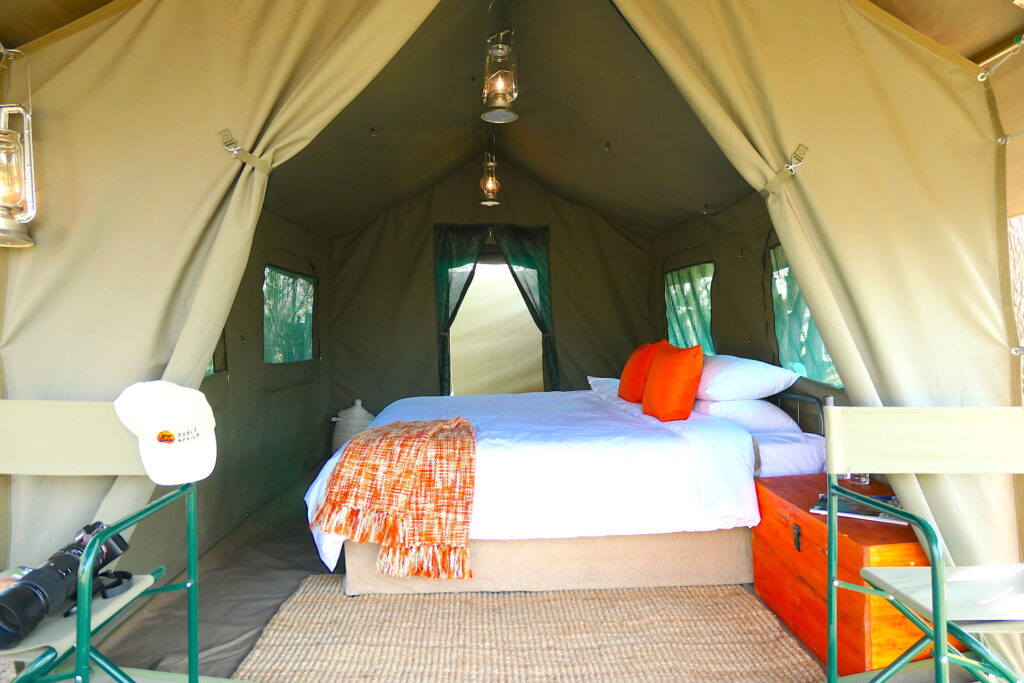
- Bathroom: Not every safari camp includes an attached toilet and bath/shower. Most safari lodges will have a flushing toilet and shower, but bucket showers are still common even in luxury lodges. For mobile camps, drop toilets are typical and showers may be communal.
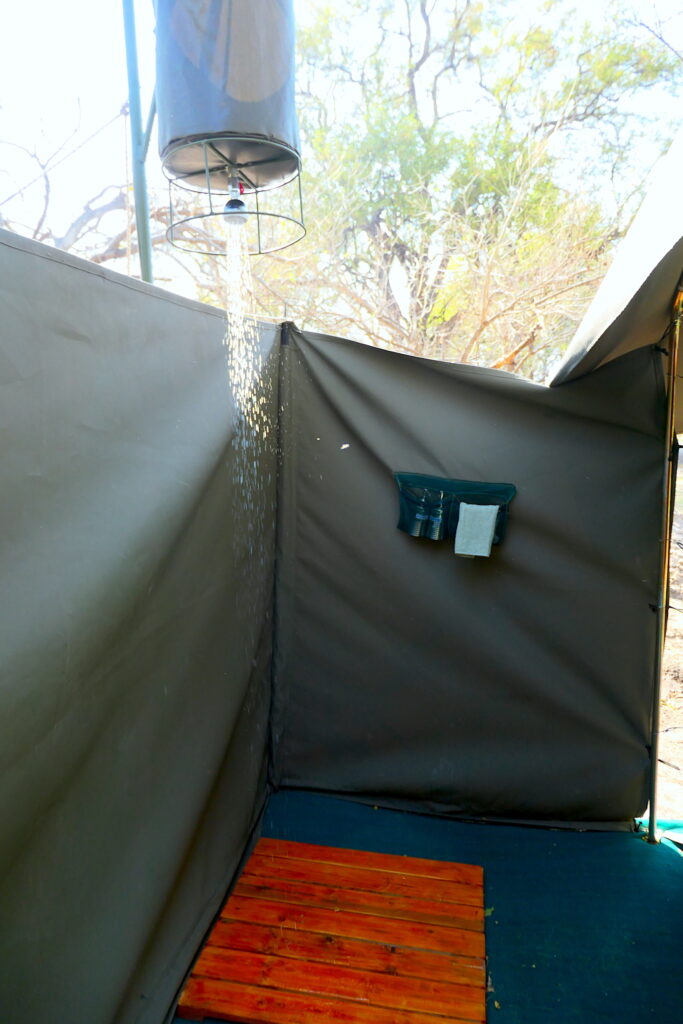
This is our custom-built shower add-on to every tent. It provides an additional 1.5 meters of space for our guests to enjoy and ensures your tent isn’t soaked during your shower.
- Shared Areas: Think of shared areas as similar to a hotel lobby or the living and dining room in your home. Every safari camp will have a campfire where you’ll hang out regularly. However, the type and size of your dining area can vary greatly, so can any sitting areas, the bar, and more. Some lodges may also have a pool.
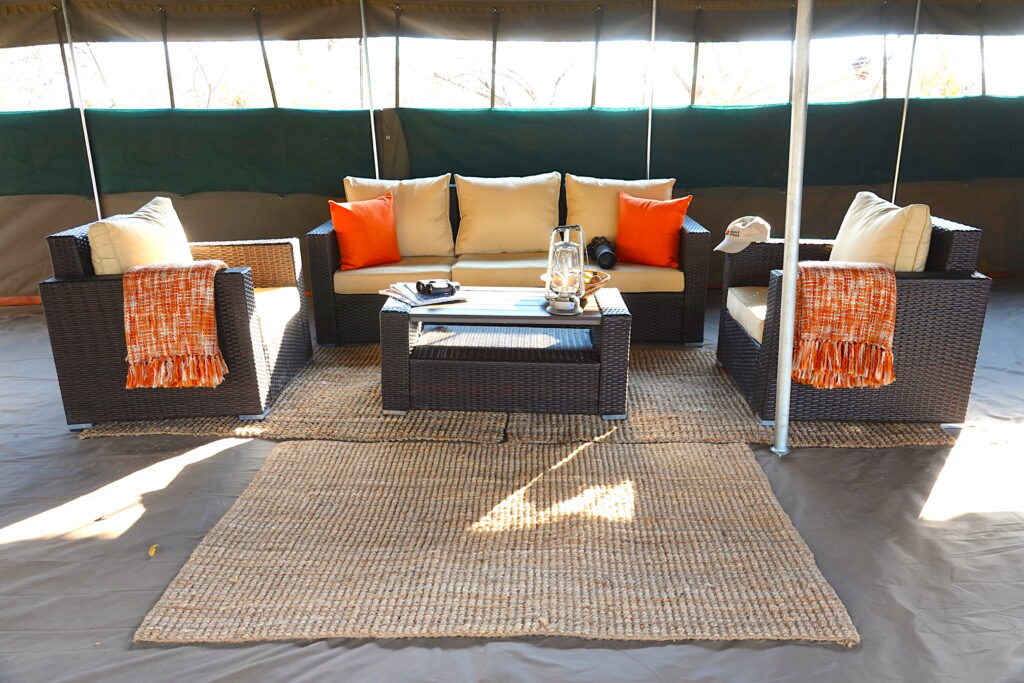
- Power Outlet: At most safari lodges and camps, all power outlets are found in the shared areas. Your room will not have the ability to charge technology. Any charging you want to do in your room will require travel batteries and some camps may only offer charging via a car battery.
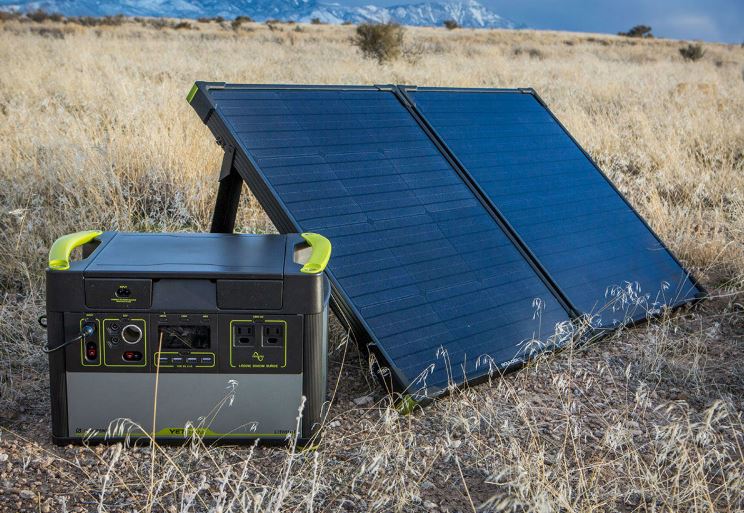
- Internet Access: Very few, if any, Botswana safari camps offer access to the internet. The goal of a safari is to unplug, so do not expect internet or mobile to work while on safari. Instead, use your safari as an opportunity to forget that the rest of the world exists. (We do have a satellite phone available for emergencies.)
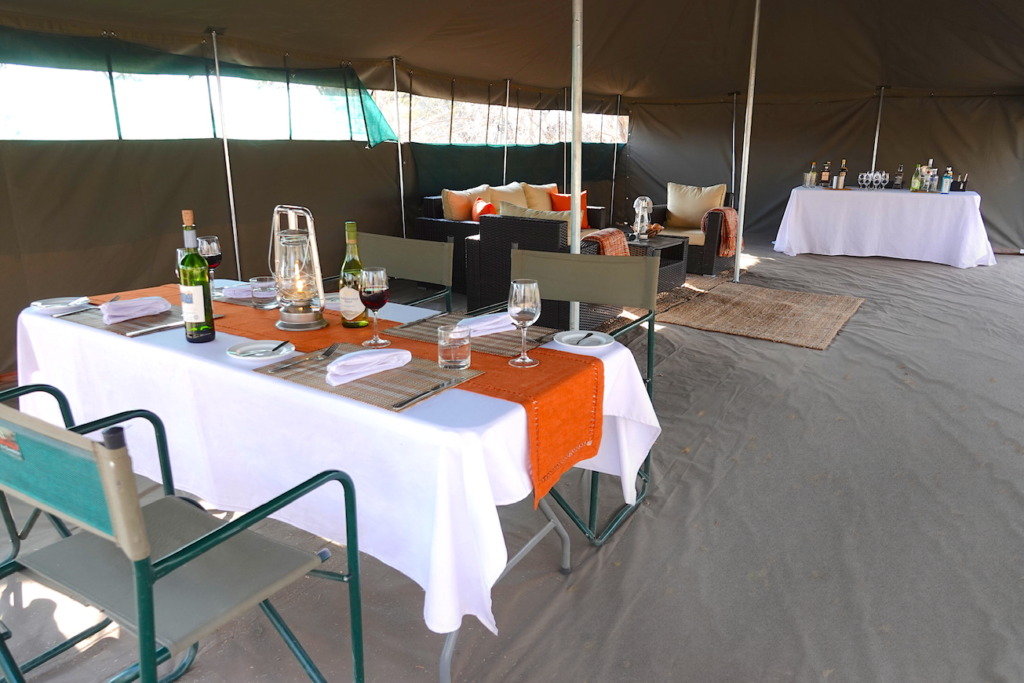
- Food: Most lodges and camps have a chef, but the type of food they serve can very. For many mobile safari camps, cooking is done over an open fire, which can drastically limit the menu. However, some mobile camps, including Brave Africa, have an entire outdoor kitchen with a full stove and oven, which means the chef can cook the same types of meals you’d find in any hotel or restaurant.
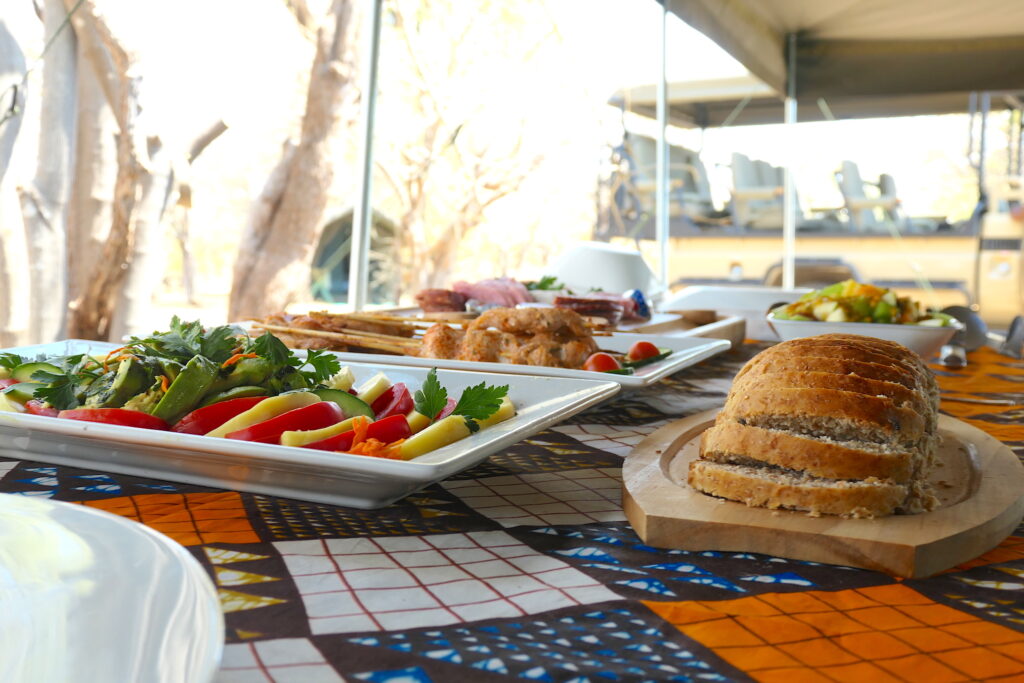
Safari Lodge vs. Safari Camp
Now, let’s look at the more specific differences between safari lodges and safari camps to help you make your final choice of accommodation. When going on safari in Botswana, you typically have three choices:
- A luxury safari lodge,
- A mobile safari camp
- A self-drive safari camp
Botswana Safari Lodge
A Botswana safari lodge is more like a luxury safari hotel. It’s a structure that remains in one location that you, as a safari guest, travel to and stay at. Typically, safari lodges will have communal areas that act like hotel lounges. There’s probably a dining hall, a reception, and a pool. Safari lodges are often built with wood, though rooms can still be canvas tents, but they offer more of a hotel-like feel. Expect:
- Suite-type rooms with comfortable beds and lots of space
- Luxury bathrooms with running water
- Large communal areas for dining and relaxing, including a pool
- Technology charging in the main communal area
- No internet access except at the more premium lodges
- Premium, chef-designed meals
All Botswana safari lodges are 100% focused on a luxury experience. They are beautifully crafted locations that are dedicated to your comfort. Guests can expect many similar features to a luxury hotel room.
Mobile Safari Camps
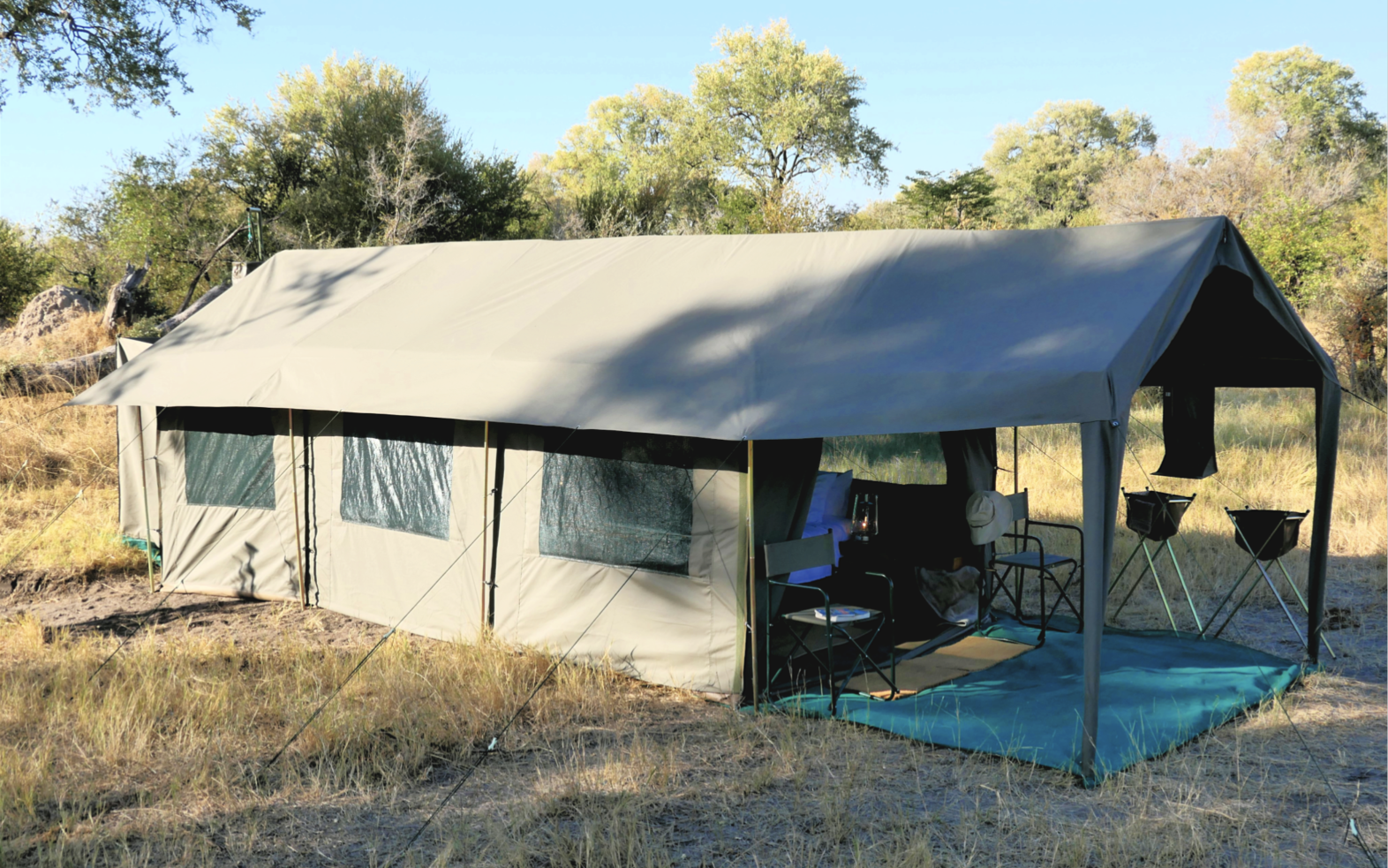
The second type of safari accommodation you’ll find in Botswana are the mobile safari camps. These can vary depending on how much you’re willing to pay and the type of experience you want. There are five types of mobile safari camps you can expect: budget, standard, premium, luxury, and ultra-luxury.
It’s important to note that the naming conventions we used above are NOT standard for the industry. Many standard camps use the phrase “luxury” to sell rooms. Before you take any naming at face value, ask about the type of experience you’re going to enjoy.
Budget Mobile Camping
With extreme budget mobile camping, your operator will provide tents, meals, and basic amenities, but the rest will be up to you. You may be expected to build your own very small dome tent or to participate in cooking. As for your sleeping and bathing arrangements, sleeping bags or cots are typical and toilets/showers might be shared.
Standard Mobile Camping
With standard mobile camping, the experience is a little more all-inclusive. You’ll still have small dome tents with limited amenities. However, the company will take care of setting up and tearing down your tent and all of the cooking. Think of this as camping with a team that takes care of the basic details. Bathing arrangements may still be shared between camp guests, though you should have your own drop toilet near your tent.
Premium Mobile Camping
Premium mobile camping will get you bigger tents with a little more room to move around. With these safari camps, you’ll have your own private toilet (drop) and bucket shower, typically connected to your tent. You still might sleep on cots, but all of your amenities are a little more premium, including your food—it will be cooked over a fire by a chef. You should also have a small dining tent that can be used as a shared communal area.
Luxury Mobile Camping
Luxury mobile camping upgrades all of your features. Your tent should be large enough for a King bed setup with extra room to move. The toilet and bathing amenities should be top-notch. You may have a flushing or a drop toilet, but the entire experience should feel much more luxurious—these experiences are often referred to as “glamping.” Meals may still be cooked over a fire, but should also include higher-quality ingredients and more variety. Communal areas tend to be on the small side, but they are comfortable though mainly used for dining.
Ultra–Luxury Mobile Camping
There are very few ultra-luxury mobile camps; Brave Africa is one. These are lodge-like camps where you shouldn’t feel as if you’re camping at all. Toilets are flushing, and tents are very spacious with comfortable mattresses, storage space, luxury amenities, and private on-demand bathing. As for the communal areas, they are much more expansive and include a seating area, room for dining, and a bar set up where guests can hang out at any time. Food should be cooked in a mobile kitchen with a full oven and stove, not over a fire, and premium alcoholic beverages are available.
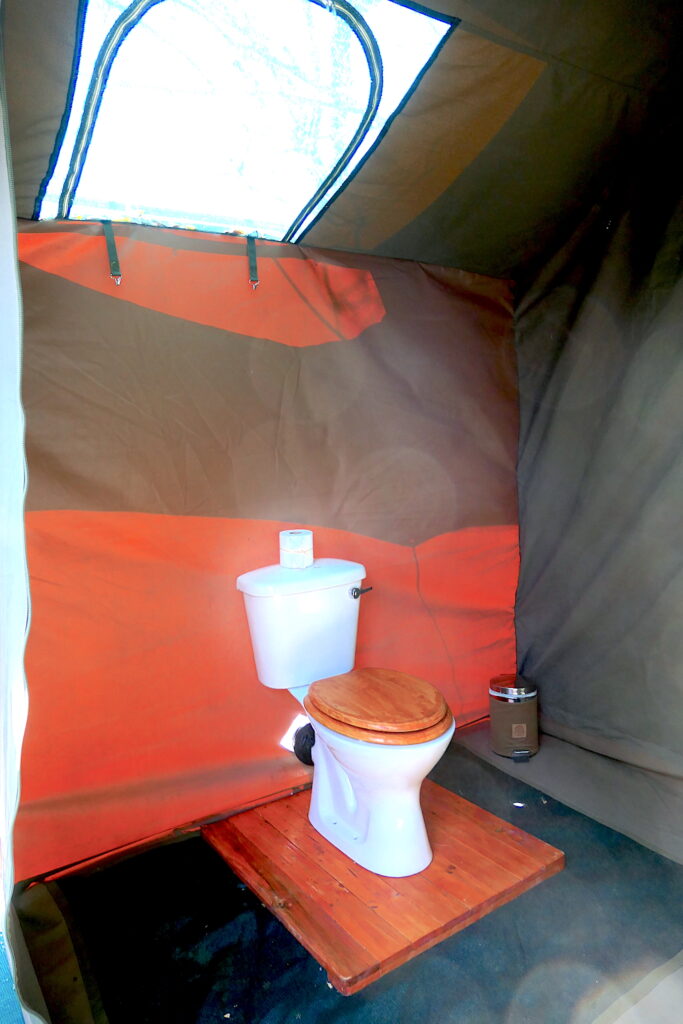
Brave Africa flushing toilet
Self-Drive Camps
Lastly, there are self-drive camps. This is camping at its most basic. You’ll have your own car, which comes with basic camping amenities. You are in charge of everything, including all supplies. You’ll be limited to campgrounds that are open to self-drive tourists and have to share communal bathing and toilets with all other self-drive guests.
Brave Africa’s Ultra-Luxury Mobile Safari Camp vs. a Safari Lodge
| Amenities |
Standard Mobile Camp |
Typical Safari Lodge |
Brave Africa Camp |
| Bed |
Cots (twin beds) |
Typical mattress bed (king or twin) |
Typical mattress bed (king or twin) |
| Tent Size |
Very small, little room to move |
Luxury suite |
Comfortable hotel-room size |
| Toilet |
Drop |
Flushing |
Flushing toilet |
| Shower |
Bucket shower (potentially communal) |
Standard hotel shower with running water |
Private bucket shower |
| Sitting area |
Captains’ chairs only |
Comfortable couches and chairs for relaxing |
Comfortable couches and chairs for relaxing |
| Dining area |
Small tent for dining or around an open fire |
Large dining room |
Large dining room |
| Pool |
No |
Yes |
No |
| Power |
Shared power in the main area, may be limited to a car battery |
Shared power in the main area typically solar-powered |
Shared power in the main area typically solar-powered |
| Internet Access |
No internet access |
No internet access in the most premium camps |
No internet access |
| Food |
Cooked over an open fire |
Chef-created in a full kitchen |
Chef-created in a full kitchen |
https://www.youtube.com/watch?v=5QOObpI95JU
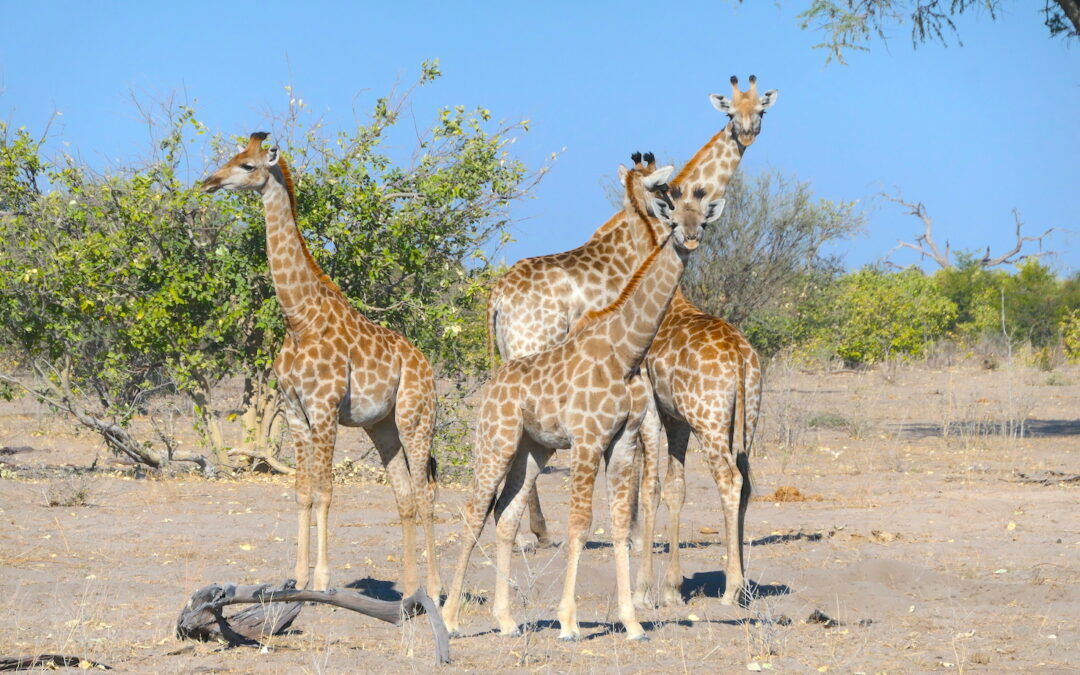
Nov 16, 2019 | Safari Tips
When should you visit Botswana? Are there better times to go on safari? Is there any time you shouldn’t visit?
These are questions we hear all the time, so today, we’re going to break down Botswana’s weather by the month and what that means for you on safari. However, before we get into it, let’s talk about the best time to go on safari in Botswana.
Best Time to go on Safari in Botswana
The best months to safari in Botswana depend on what you want to see, experience, and do. Every month offers something different for visitors, and it’s never really a wrong time to go. Botswana is a year-round destination with 300 days of sunshine and abundant wildlife throughout the year.
However, the weather does change throughout the year with seasons of more substantial rainfall that can impact your game-viewing expectations. So let’s talk about when you should visit Botswana based on your expectations.
High Season: Best Time to See the Animals
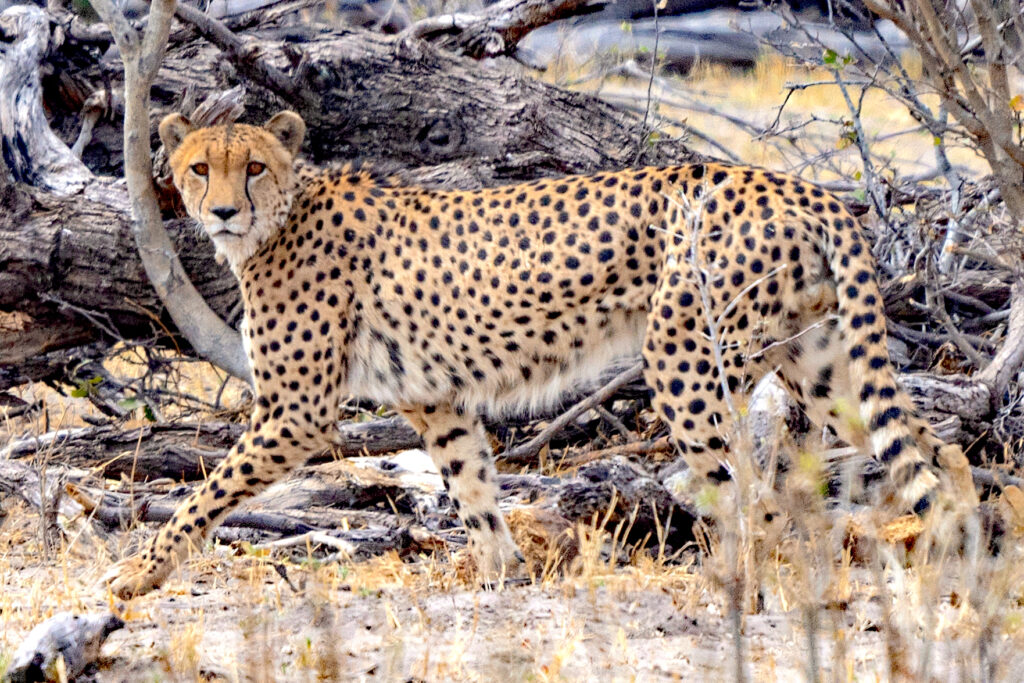
This is the time of year to enjoy once-in-a-lifetime animal sightings.
High Season goes from July to October. These four months are considered the best time to visit Botswana if you want to see the animals. Because it’s the dry season, there’s far less vegetation, which means animals have nowhere to hide, making them easier to spot. Also, the limited water means that you can head to concentrations of permanent water, and the animals will mostly come to you. This is also an excellent time for clear skies, no rain, and fewer bugs.
However, it is essential to note that Botswana High Season is also the busy season. You’ll encounter the most tourists during this time, so you may feel a little more crowded during these best months to safari in Botswana. And you’ll need to book early! Many people book up to a year in advance to find a slot during these perfect months.
Shoulder Season: Fewer Crowds & Green Scenery
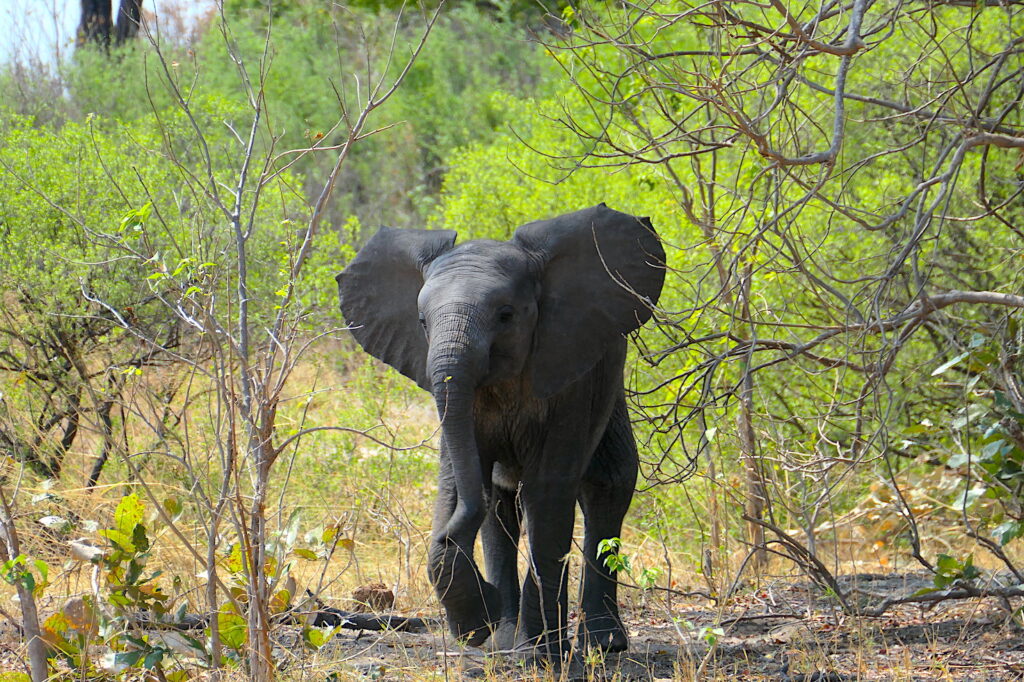
Beautiful greenery makes the Shoulder-Season a stunning time to visit while still offering amazing wildlife.
If you’re wondering when to visit Botswana when there are fewer people and great weather, Shoulder-Season is fantastic. Made up of four months—November, April, May, and June—this time of year offers great weather, fantastic wildlife viewings, and more affordable pricing. The scenery is relatively green in April and May, which can be excellent for pictures. However, thicker vegetation can mean a harder time seeing the animals.
Rain may also fall in November and April, but you shouldn’t encounter a lot—just a few short thunderstorms. However, the high concentration of water leftover from the wet season may make it hard to get to some areas still, but for the most part, driving conditions are reasonably good. Weather is pretty amazing during the Botswana Shoulder Season, but you could still have some frigid nights, so warm clothes are a must.
Off-Season: Rainy Weather but Low Rates and Lots of Newborns
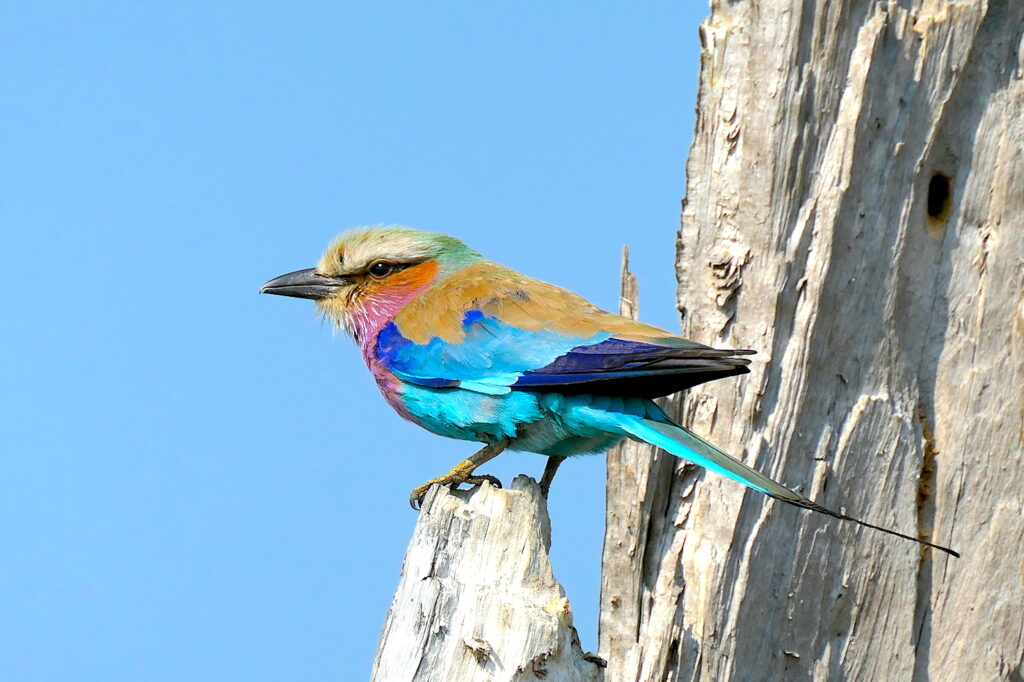
Off-Season is a great time for bird watching. Birds migrate here by the millions during these months.
Off-Season goes from December to March. During these four months, you’re almost guaranteed to encounter rain during your game drives. While the greenery and vegetation are stunning, the abundance of water can make some things difficult. It’s humid and hot, so you could deal with a lot of mosquitoes. You may also have a hard time driving around due to flooding.
However, there are some wonderful things about the Botswana Off Season. These are some great months for bird watching, and in December, January, and February, it’s migration season. In the Kalahari desert (in the south), this is the time to witness the second largest migration in Africa, the zebra migration as well as the pink flamingo migration. In the Okavango Delta, this is the time for newborns, which can also mean high concentrations of predators.
Botswana Safari by the Month
Botswana is a year-round destination with 300 days of sunshine and abundant wildlife throughout the year. However, if you have limited vacation time and only have time off during a particular time of the year, here’s a simple breakdown of when to visit Botswana by the month.
January & February
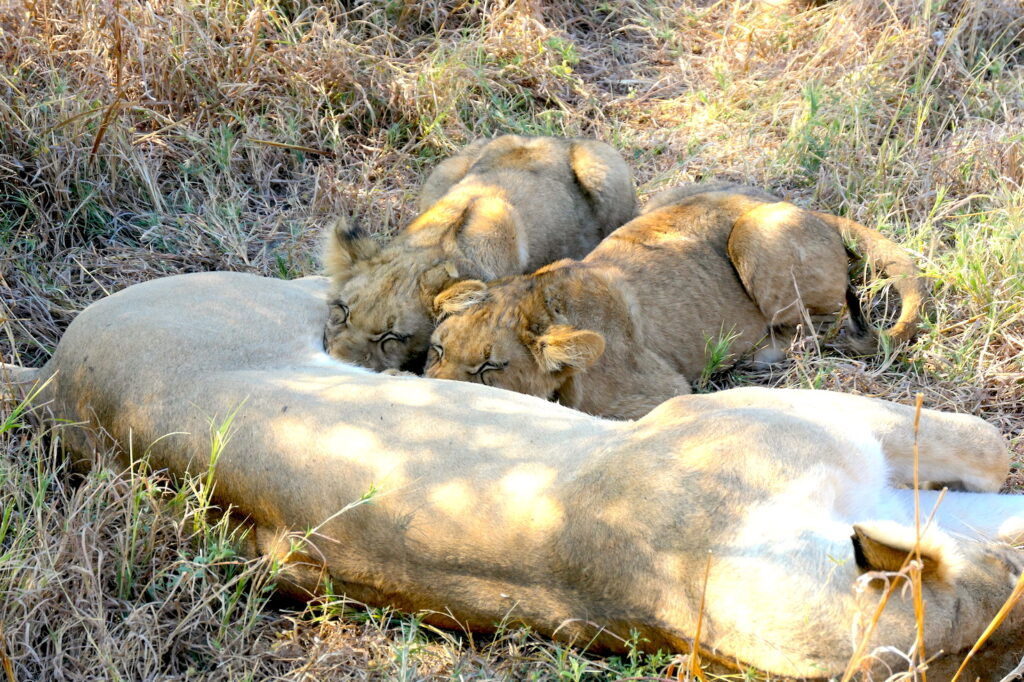
January and February are the two wettest months of the year. This means that you have a very good chance of getting rained on while you’re out on game drives. However, it also means there’s beautiful thick, green vegetation. The scenery will be stunning this time of year. Flowers will be in bloom, trees will be packed with leaves, grass will be growing, and water will be everywhere. Unfortunately, this incredible scenery can hide wildlife because you can’t see as far. It’s also hot and humid. In spite of this, these months are incredible for bird watching, many migrations are in full swing, and many antelope give birth so predators can be abundant.
The good:
- Great time for bird watching.
- Beautiful scenery
- Many migrations are in full swing, including the Botswana zebra migration.
- Antelope birthing seasons, so hunting predators will be in abundance.
- Highly affordable off-season prices.
The bad:
- Lush greenery means that animals have more hiding places.
- Lots of rain could mean wet game drives.
- An abundance of water may make it difficult to get to many areas.
- Hot and humid weather may be uncomfortable for some.
March
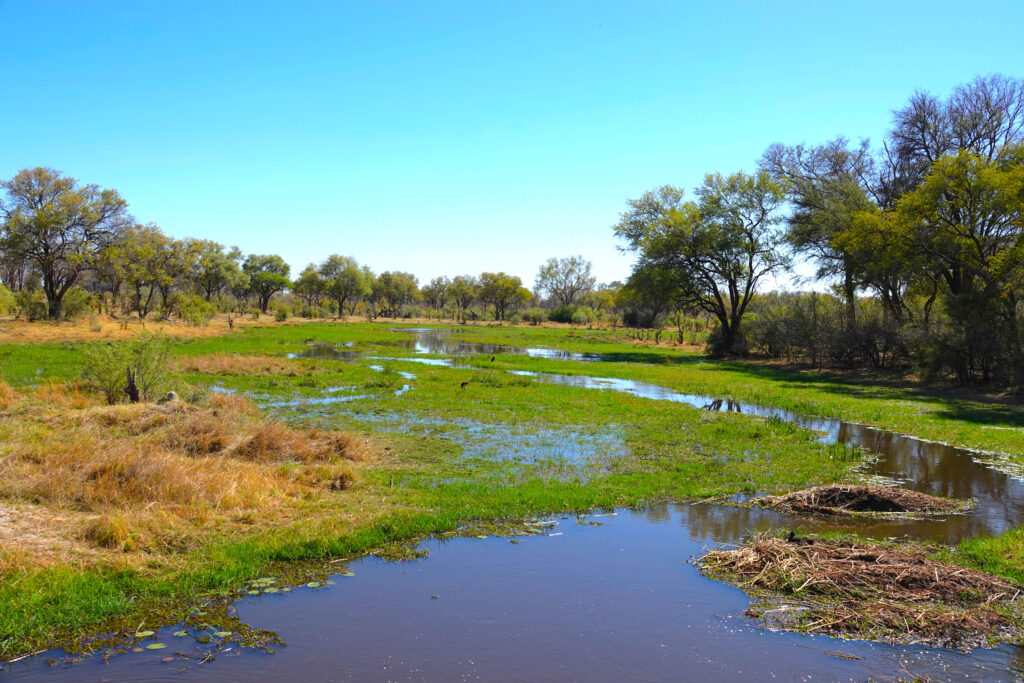
March is when the rains begin to ease. You’re far less likely to be rained on in March, but all the water from January and February has built up, so water is absolutely everywhere. This will be the greenest season and a stunning time to visit Botswana if you want to see the country in full bloom. However, because the water has had so long to build up, getting around can be difficult. You’ll have to find a way to drive between water, and some areas may be inaccessible. But this does mean that you’ll find large concentrations of animals in the accessible dry areas. Unfortunately, this can also be prime mosquito season, so bug spray is a MUST!
The good:
- Because it’s so wet, large concentrations of animals will be found in dry areas.
- The greenest time of the year with lush plants and flowers.
- It’s birthing season for many animals, which could mean lots of happy predators.
- Highly affordable off-season prices.
The bad:
- VERY thick greenery means that animals have more hiding places.
- Flooding may make it difficult to get to certain areas.
- This is a mosquito-heavy season because there’s so much water.
April & May
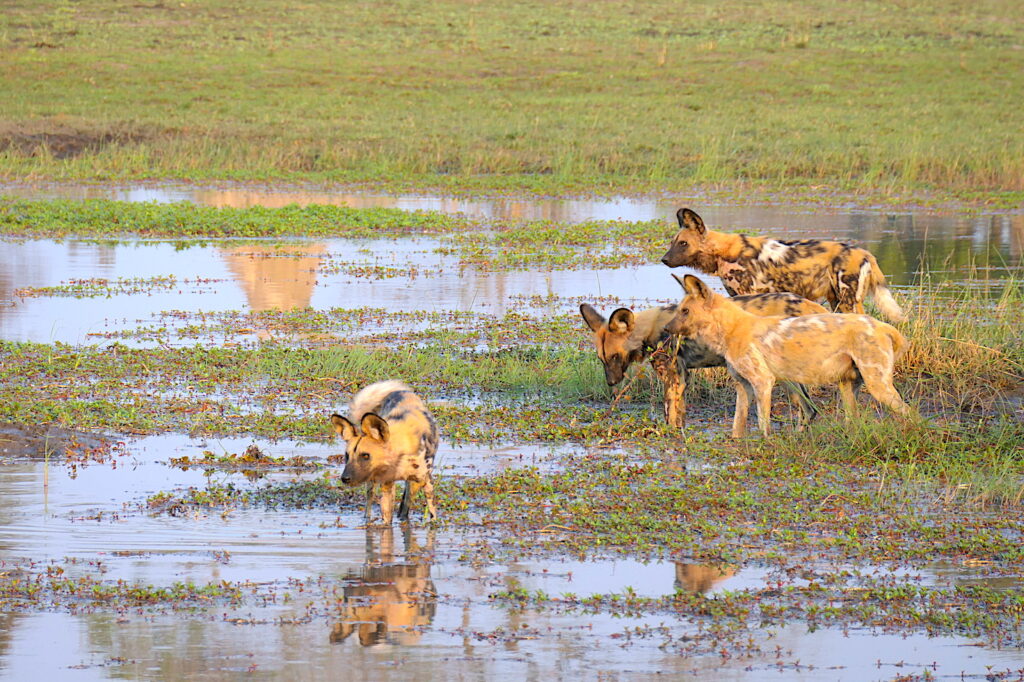
April and May are two amazing months to visit Botswana. Considered shoulder season, this is one of the best times to go on a Botswana safari because it’s more affordable, but the experience is still incredible. The days are warm, the nights are cold, and there’s little chance of rain, which makes it great weather. The landscape is still green because you’ll have just left the wet season, but the water will have already begun to subside. What this means is that you’ll find animals hovering around permanent water sources, and it is before peak season, so visitors are few and prices are more affordable. However, depending on flooding, some activities may be unavailable.
The good:
- Beautiful green scenery, but far less water so you can get around.
- Less busy time of the year with fewer tourists.
- Great weather: warm days and cold nights with very little chance of rain.
- Shoulder season pricing makes these two months more affordable.
The bad:
- This is late fall/early winter so the weather might be a little cold for some people.
- There’s still thick vegetation during this time, so animals may be harder to find/see.
- It’s still mosquito season, and some water-based activities may be unavailable.
June & July
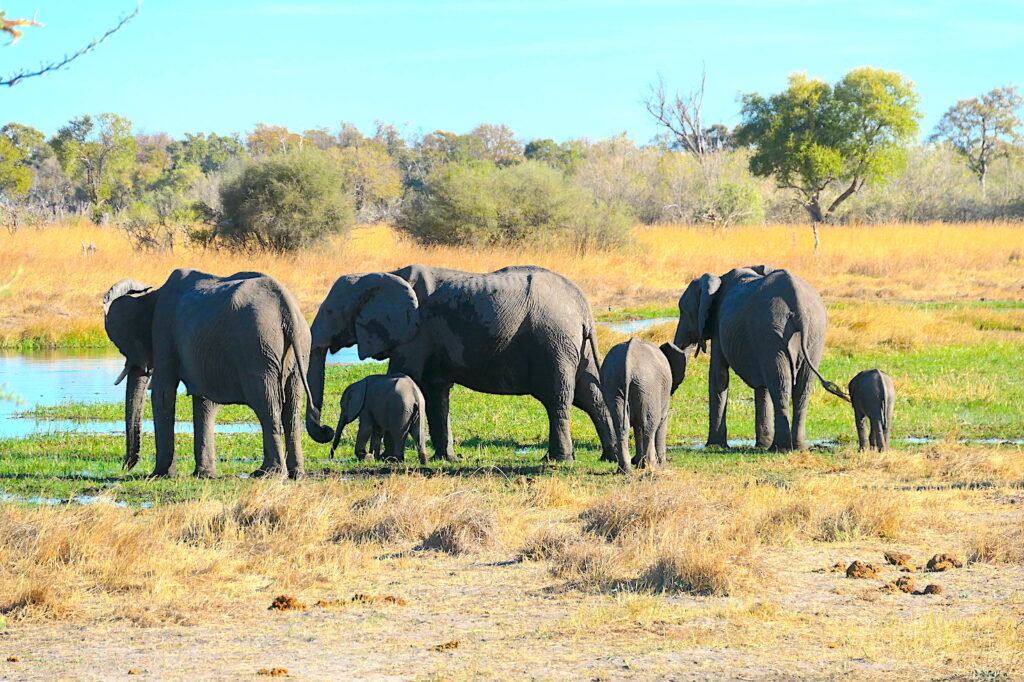
June and July are two months with flawless blue winter skies! High season begins during this time, so available and prices are at a premium. You’ll need to book six to twelve months in advance if you want to ensure your slot with Brave Africa. These are two of the best months to safari in Botswana because the weather isn’t too hot during the day, there’s little to no chance of rain, and as long as you don’t mind cold nights, it’s gorgeous. There are very few mosquitos, and game viewing is exceptional at this time.
The good:
- Great weather with mild daytime temperatures, no rain, and cold nights.
- Incredible wildlife viewing with animals concentrated around water.
- Sparse foliage means that you have the best chance of finding animals
- Less water means very few mosquitoes and open access to almost any area.
The bad:
- Less greenery because the dry season has started.
- Cold nighttime temps sometimes below freezing.
- Parks can begin to get crowded with tourists.
- High season means premium prices and limited availability.
August, September & October
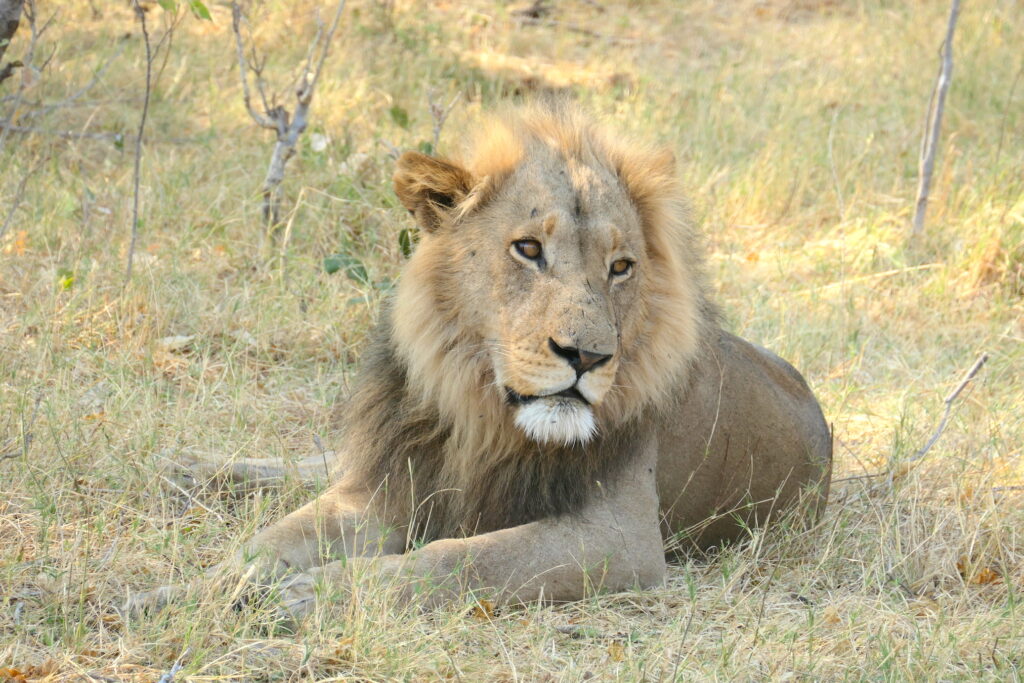
August, September, and October are peak season in Botswana. These three months offer the highest concentration of game! And thinned out vegetation means that the animals will have a difficult time hiding and you can off-road as needed to gain the best viewings. It’s the greatest of the year to see herds of antelope, elephants, and buffalo, especially around watering holes. And this means that predators are in abundance. However, it’s important to note that these three best months to safari in Botswana are hot and dry, which can be uncomfortable. Expect stifling days and sultry nights with lots and lots of sunshine.
If you can handle the heat, this is your chance to see once-in-a-lifetime sightings.
The good:
- Great weather with brilliant blue skies and no rain or humidity.
- The best wildlife viewing with game concentrated around water.
- Very sparse foliage means animals can’t hide.
- Nowhere should be out-of-bounds, and all activities are available.
The bad:
- Very sparse greenery, so not quite as beautiful scenery.
- Hot weather during the day and very dry.
- Parks will be at their highest capacity with tourists.
- High season means premium prices and limited availability.
November/December
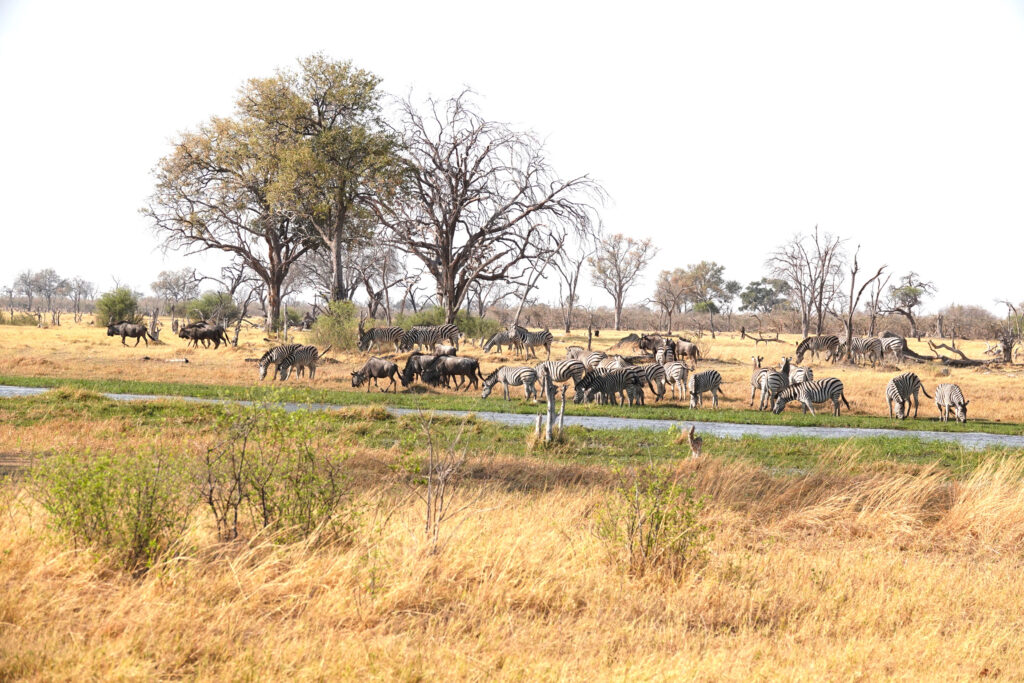
November and December welcome the first rains of the wet season. The weather begins to cool this time of year as the rains start to fall. Some areas will be inaccessible because of mud and heavy rain, but flooding won’t be in abundance, so you should still have lots of chances to get around. This time of year is excellent for newly-born calves and cubs as well as migrant birds and some budding, green scenery.
The good:
- Lots of newly-born calves and cubs.
- The migration season for Zebras and birds (in the millions) begins.
- Start of the green season, which can mean beautiful foliage.
- Shoulder and Off-Season pricing makes these two months more affordable
The bad:
- Hot and humid weather can make game drives uncomfortable.
- There’s a good chance you can be rained on at the start of the wet season.
- Mud and heavy rains may make some areas inaccessible.
When Should You Visit Botswana?
So, when should you visit Botswana? There’s no bad month! If you can go on safari more than once, we recommend coming back during different times of the year so that you can experience Botswana in all of its glory. However, if you only have one chance, we recommend visiting between May and October. These are the peak months and will give you the best chance of once-in-a-lifetime encounters.
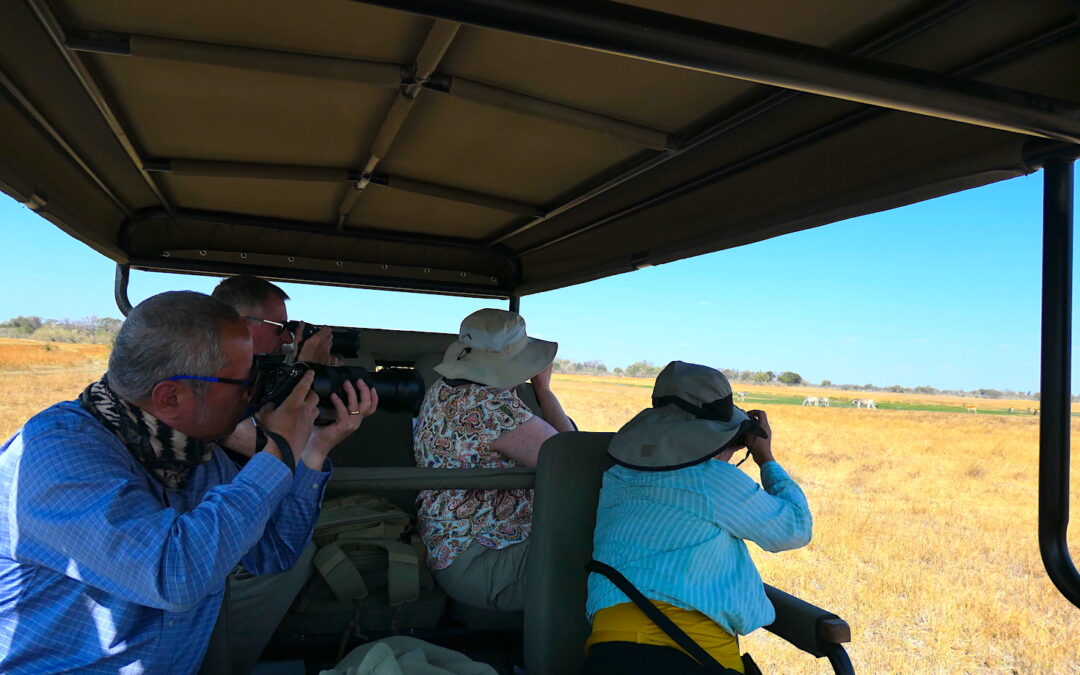
Nov 9, 2019 | Adventure Safari, Brave Africa Safari, Game Drive, Safari Tips
Safari guiding is the most critical element of a life-changing safari experience. A guide is your connection to the wildlife, your host in the Botswana bush, and your personal Wikipedia page. Without an exceptional safari guide, everything about your safari will be lackluster, and you could even put your life in danger. (more…)
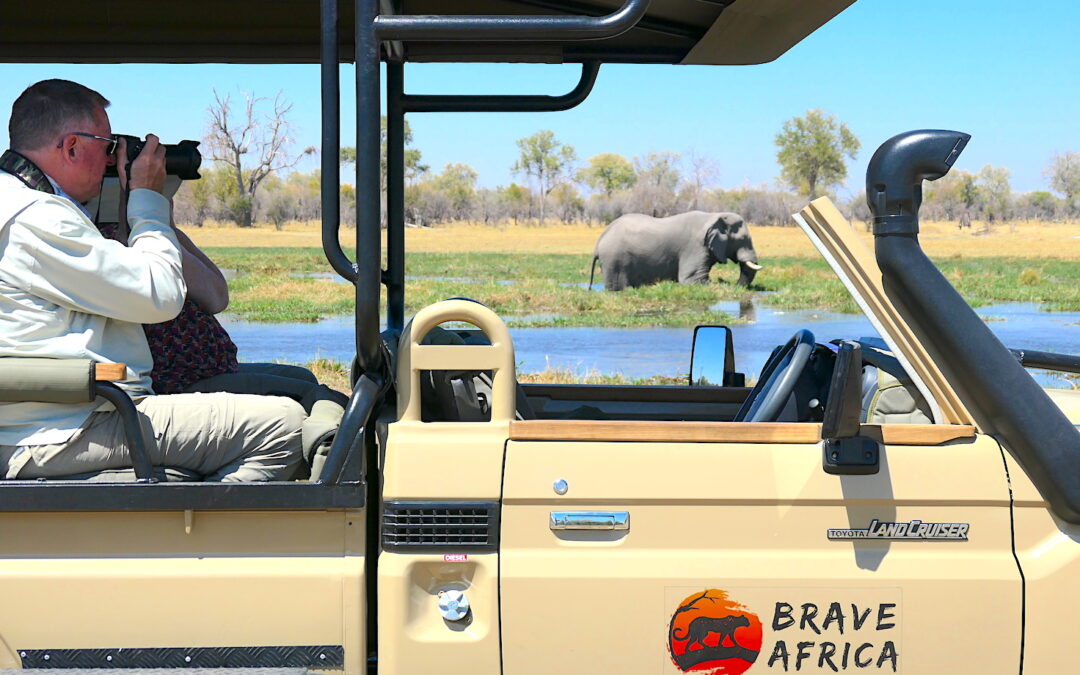
Oct 12, 2019 | Brave Africa Safari, Safari Tips
When planning an African adventure, there are a thousand questions you can and should ask yourselves. But we’re here today to talk about a subject that’s often overlooked by safari-goers. Whether it’s your first time on an African adventure or your tenth, before you choose your Africa safari camp or lodge, ask about your safari vehicle.
The Importance of Your Safari Car
Your safari vehicle could make or break your trip. You’ll be in this car day in and day out for hours upon hours at a time. It will be how you get through the thick and wild Bush, and it will be responsible for taking you to the animals.
You might be surprised to learn that every Africa safari camp and lodge uses different vehicles. Sometimes it’s because they want to offer a special experience for their guests, and other times the differences are just about saving costs.
Choosing a company that uses a crappy safari car will leave you feeling vastly disappointed and jealous of every other safari vehicle you see. But if you’ve never been on safari before, how do you know what’s a good safari vehicle and what’s not?
6 Features You Want in Your Safari Vehicle
At Brave Africa, we have top of the line safari vehicles, and we think the experience is well worth it, but don’t take our word for it.
Let’s dive down into the type of experience you want on your African adventure and the kind of safari car you need to make it happen.
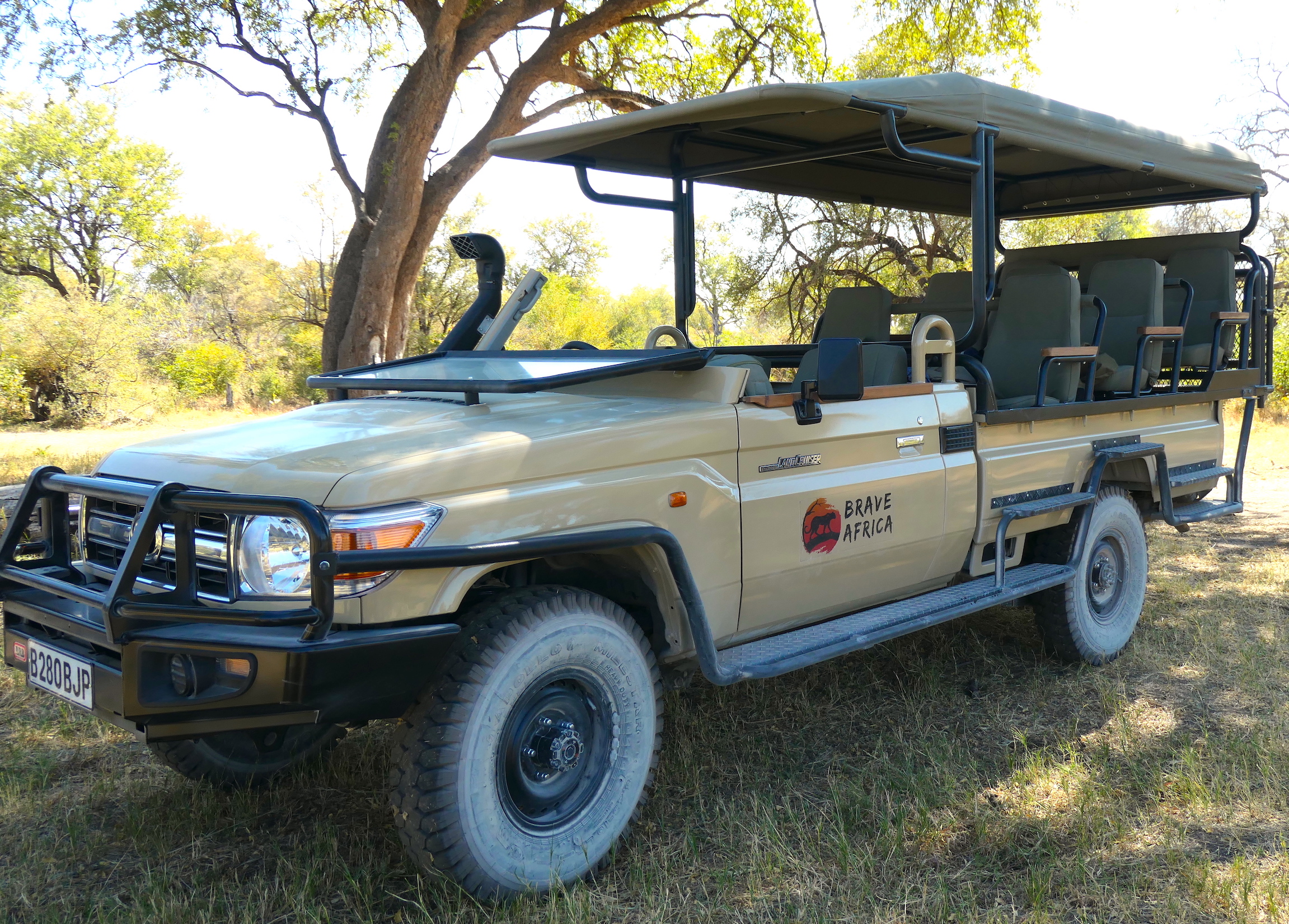
Every Brave Africa safari is custom-built to handle the Botswana Bush. The stadium-style seats in the back are open to the environment but still protected by a canopy from the sun and rain. There’s a snorkel that allows us to go through deep water, custom tires/wheels, a fold-down windshield, USB charging ports, a storage cooler, and more.
1. Toyota Land Cruiser
Twenty-five years ago, the Land Rover was the standard safari vehicle. But as soon as the Toyota Land Cruiser entered the market, it became the new Toyota safari truck, and the game changed forever.
Toyota Land Cruisers are incredible vehicles that can handle the muddiest of conditions without getting stuck. It’s a powerful and dependable vehicle that’s known for exceptional performance, reliability, and durability. It offers a smooth ride even in the toughest of conditions, and it can go for days on a single tank of diesel, of which the safari car has two.
However, an off-the-shelf factory Toyota Land Cruiser isn’t precisely what you’re looking for either. It should be specially modified for safari conditions. These modifications include:
- A snorkel that can handle deep water
- Updated shock and suspension system for a smoother ride
- Increased ground clearance
- Updated wheels and tires specifically designed to handle the African Bush
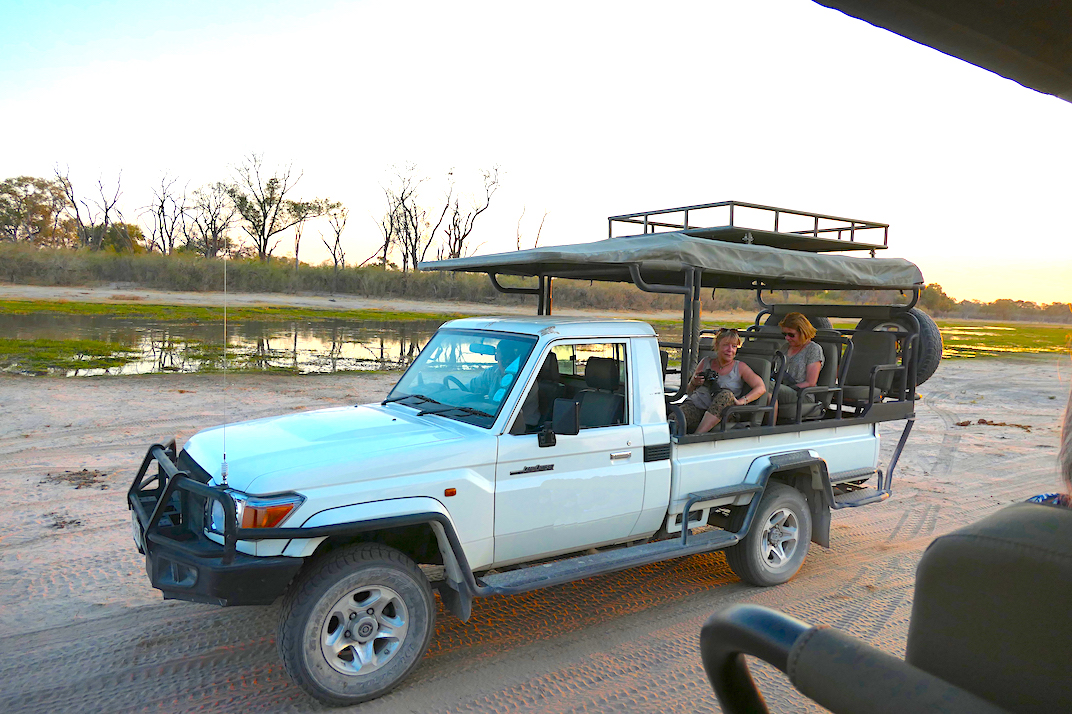
Notice the lack of modifications on this safari vehicle. There is no snorkel, which means deep water will be an issue. There also looks to be little to no modifications when it comes to the wheels/tires, the cab, and more. It’s basically a pickup truck with seating placed on the back.
2. Fully Open Vehicle
If you’ve done any safari research, you’ve probably seen tons of images of different types of vehicles. In Kenya and Tanzania, most safari camps and lodges prefer fully enclosed safari cars where you have to stand up for a clear view of the wildlife without windows.
However, in Southern Africa, including Botswana, you’re mostly going to find safari vehicles with a more open-air approach, but how open it is can drastically change your African adventure.
Open Seating in Your Safari Vehicle
First, let’s talk about your seating area. There are completely open safari vehicles—no windows, doors, or frames blocking your view. Then, some vehicles claim to “protect you from the elements” while at the same time changing how you experience the Bush.
How much access you want to the animals is up to you, but we think the more open, the better. We feel that having something between you and the animals takes away from the magic of your African Adventures. It transforms your experience into something more zoo-like and less “in your face” majesty.
A closed seating area will mean that you’ll deal with less dust, but we think that’s part of the safari experience. We’d rather breathe in a little dust and maybe get wet, but be right there ready and waiting to watch a lion walk by our car or hear an elephant trumpet at us.
However, no matter how open the car is, it’s the seating that matters too. You do not want to be in a car with middle seats. Ask your safari operator how many people they’ll allow per car. We max out at six occupants so that everyone has a window seat, and no one is stuck with a lousy view.
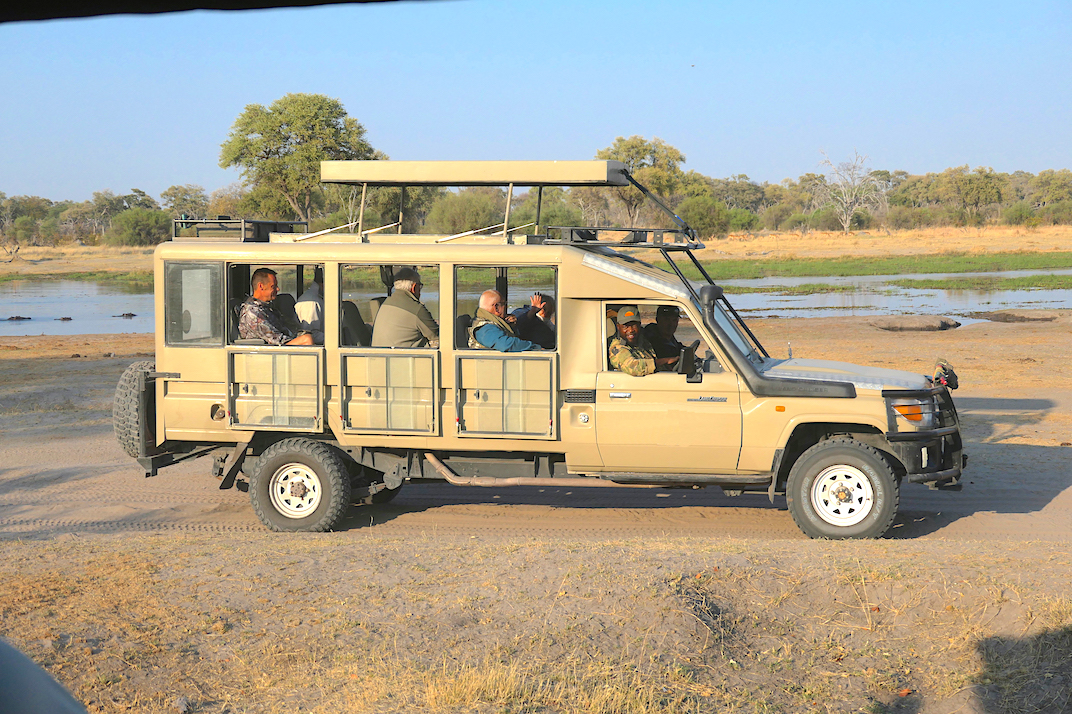
This safari vehicle offers a closed off seating area, which means an obstructed view of the wildlife as well as a hot backseat experience. More likely than not, there’s no air conditioning in the back, and with a closed-off front cab, very little chance for a breeze. That’s tough. And when it comes to birding, this car will not be helpful.
Open Cab Safari Car
Second, let’s talk about the driver’s cab. Even in safari cars where the entire seating area is open to the elements, you might find a situation where the cab is closed. This is definitely something you DO NOT want.
A closed cab means you are closed off from your safari guide. Yes, he or she might still be able to talk to you by leaning out the window, but it’s going to be ten times harder to interact with them, which will greatly detract from your experience.
Your safari guide is essential to your time in the Bush. They’ll explain animal behavior, unique plants, and more. Think of it like being in the car with a live Wikipedia page that can answer all your questions on the spot without the Internet.
Now, imagine that to get to your Wiki page, you had to click ten different buttons to find the answer you wanted. That would get annoying quickly, right? That’s the same with a closed cab. If you don’t have direct and easy access to your guide, you won’t be able to hear what he or she has to tell you throughout your drive, and you’ll lose out on an incredible amount of insight.
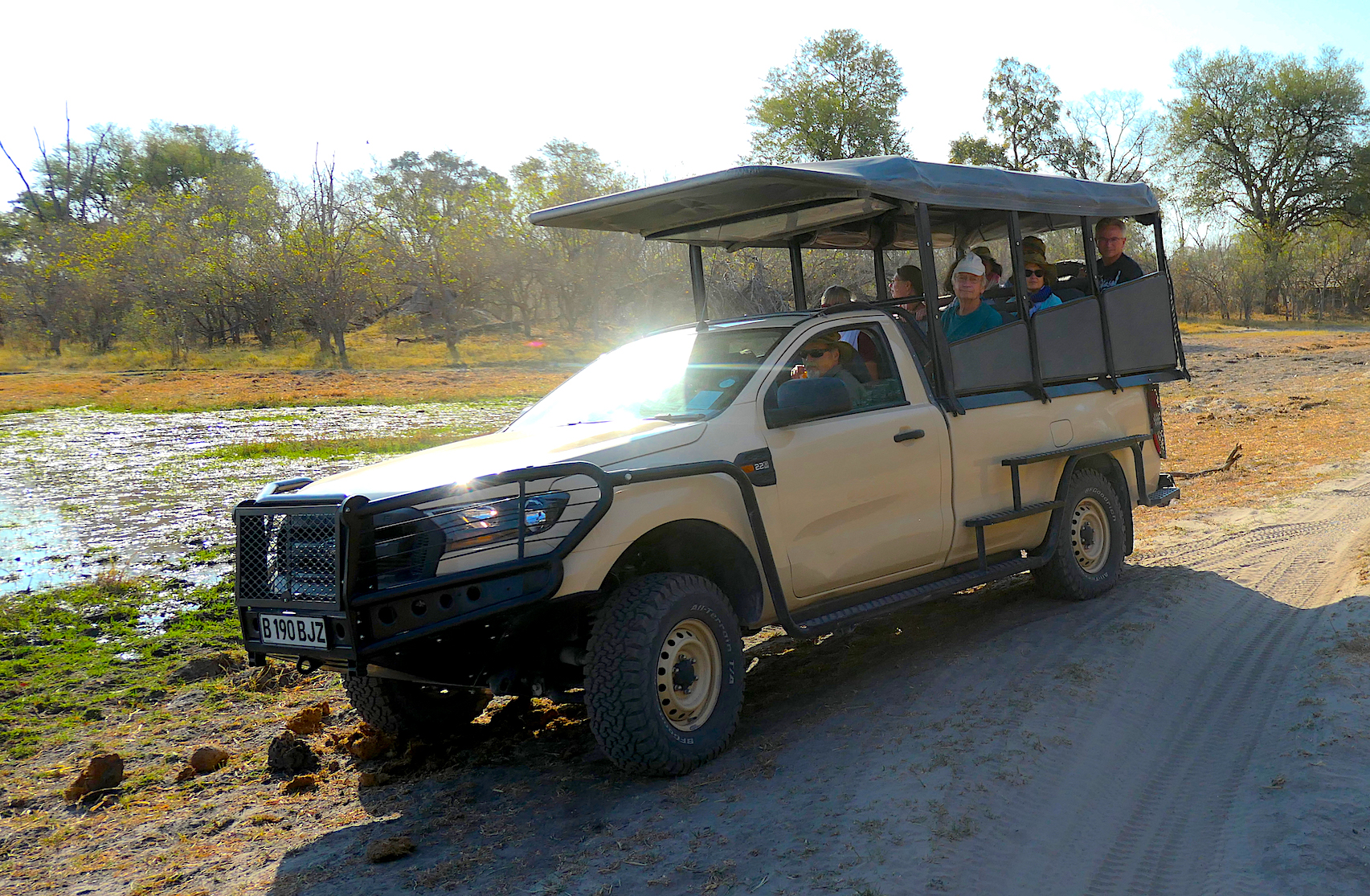
This safari vehicle has a closed cab, which makes it difficult for guests to talk with their guide for a far less personal experience. It also has a very closed in seating area. Those guests in the back row have very limited viewing. Also, notice the middle seat…that’s a lot of guests in one vehicle.
3. Canopy Cover
Now, a fully open vehicle is excellent, except when you don’t have a canopy! Yes, Botswana might be a desert, but that doesn’t mean it won’t ever rain, and when it rains, you want a canopy to keep you from getting soaked. But even when it doesn’t rain, a canopy is fairly essential.
The sun is hot and in Botswana—with an average of 3,300 hours of sunshine every year—and that means you want to be in the shade as much as possible. A fully open cab without even a canopy will mean you have no protection from the elements.
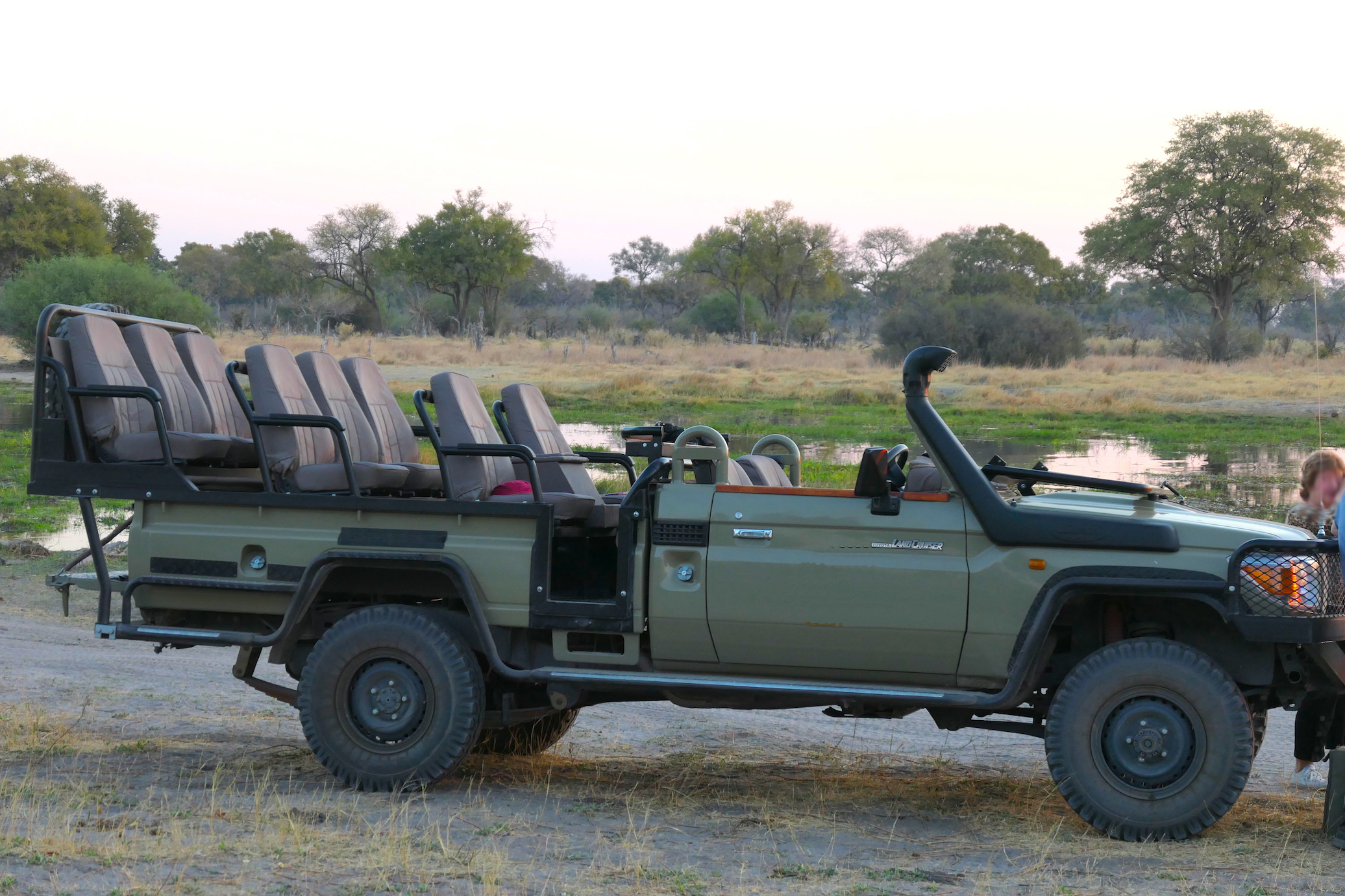
Without a canopy, guests in this vehicle will have no relief from the sun or rain.
4. Safari Car Power Charging
Access to power is critical even in the middle of the Bush. Between our guests’ cameras, phones, and other technology, we know that having the ability to charge your devices is essential to an enjoyable experience. And with 12- to 13-hour game drives, relying on only battery power can be nerve-wracking.
That’s why every Brave Africa safari vehicle offers two USB charging stations at each seat, so you can charge two items at once throughout your daily game drives. You’ll never have to worry about going without power.
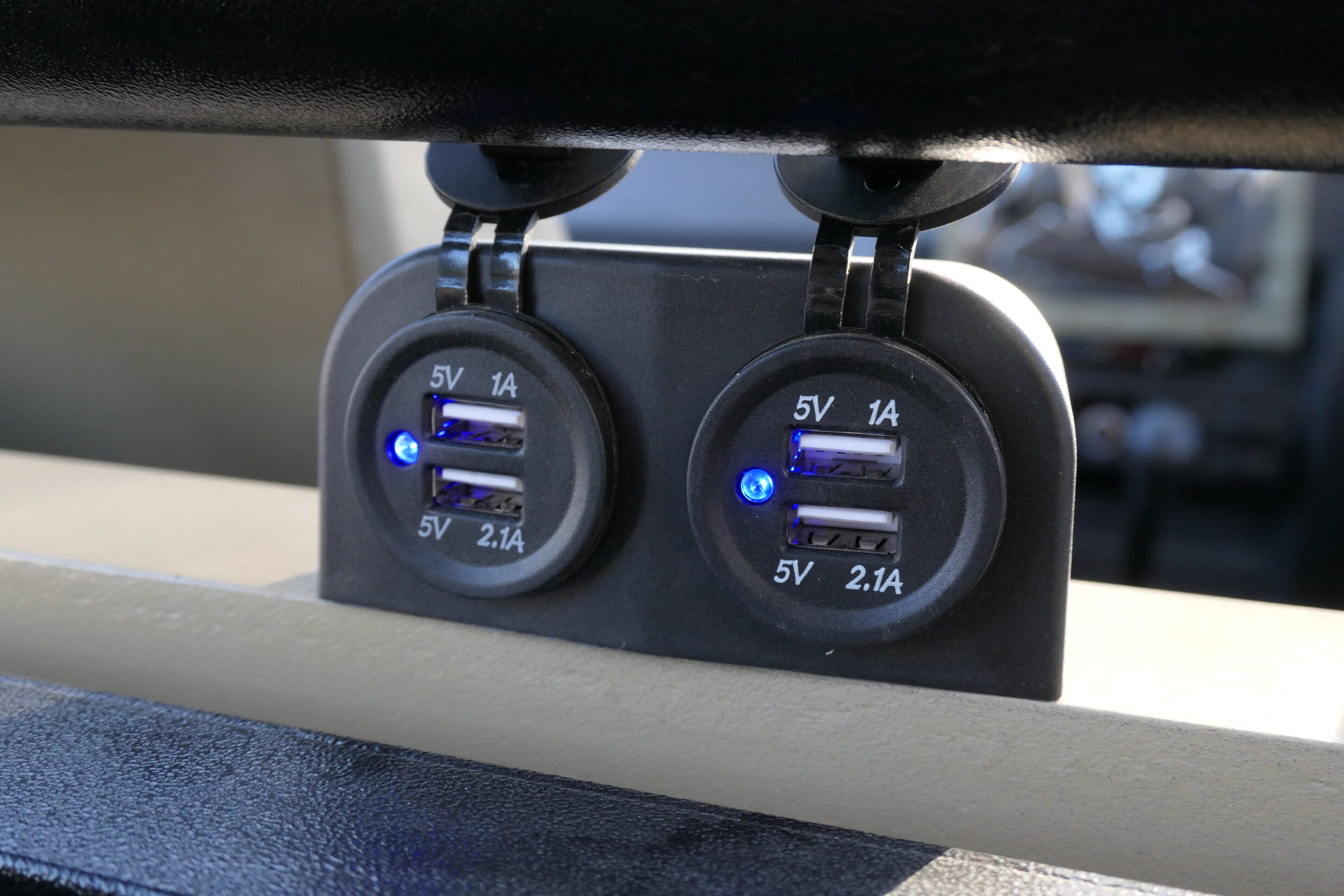
Every Brave Africa safari vehicle offers 2 USB ports per seat. Here’s a picture of the four slots for the two front seats.
5. Refrigerator System
When it’s 35 degrees Celsius (95F), it’s way too hot not to have access to ice-cold water, juice, soda, or beer to cool you down in the heat. So, before you choose your African adventure safari, ask the operator if they have a refrigerator system in their safari car.
In the middle of Brave Africa’s first row of passenger seats, we have a large refrigerator that can hold around two dozen cold drinks. This means that no matter how far away from camp you are, you can still enjoy crisp cold drinks on a blistering day.
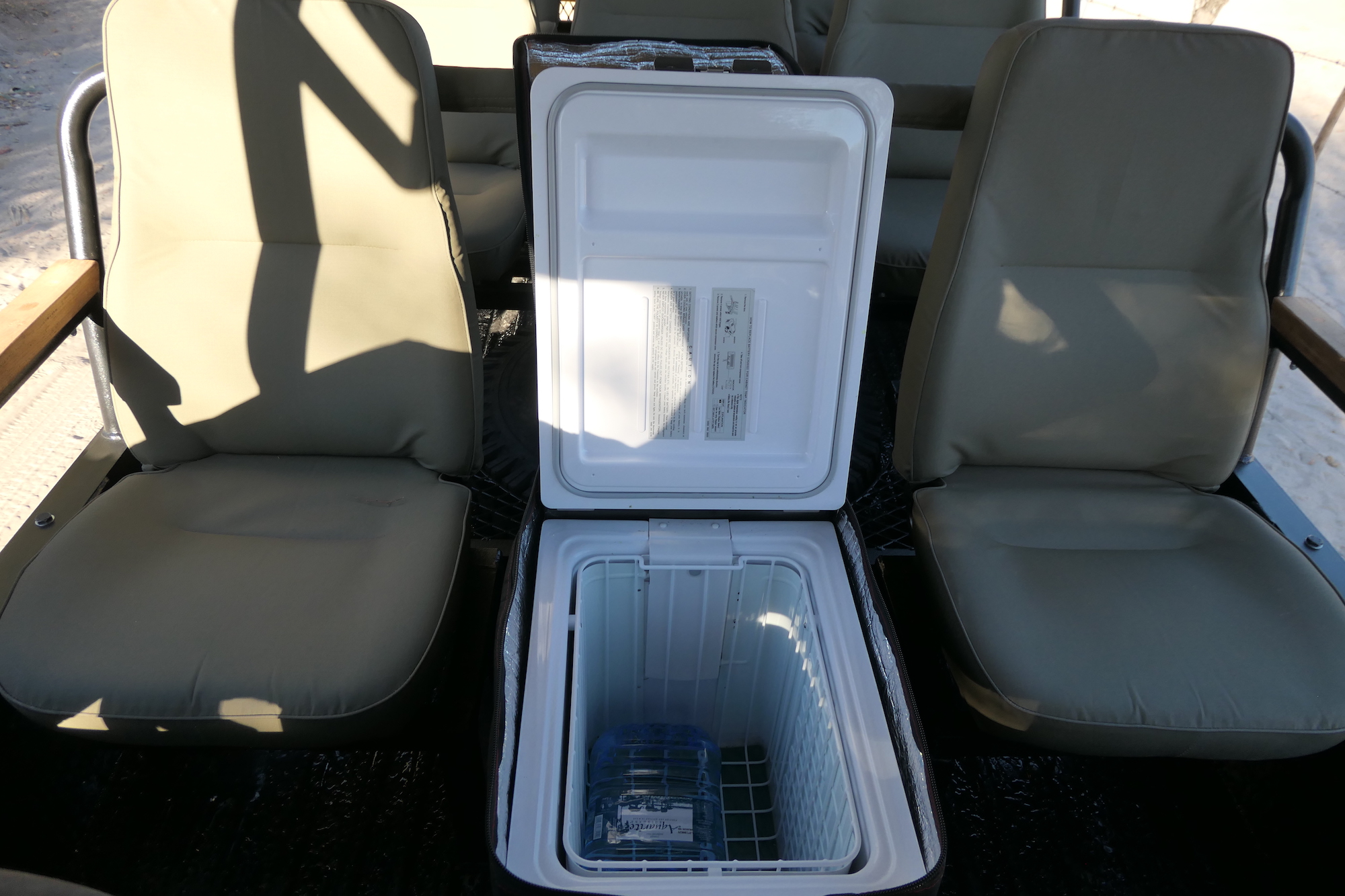
Between the first two seats, we added a cooler for ice-cold drinks and food on every game drive.
6. Storage Options
When you’re on all-day game drives, you need to be able to bring a lot of stuff with you to have a good experience, and that means you need storage space. You need room to store your day bag with your camera, phone, spare jacket, and other personal items. There also needs to be room for snacks, lunch, tables, chairs, and other items you might need on your all-day drive.
At Brave Africa, we max out our vehicle at six guests, so there’s plenty of room to leave your bag. In the back two rows, you can place your stuff in the middle seat. In the front row, you can put your items on top of the refrigerator. There’s also plenty of room to put your bag at your feet as needed.
As for storage for tables and chairs, we’ve built on an extra storage rack on the back of the vehicle. This rack can be folded down or up and used to store guest luggage to and from the airport. We also use it to carry tables and chairs for lunch in the Bush—a requirement for every African adventure.
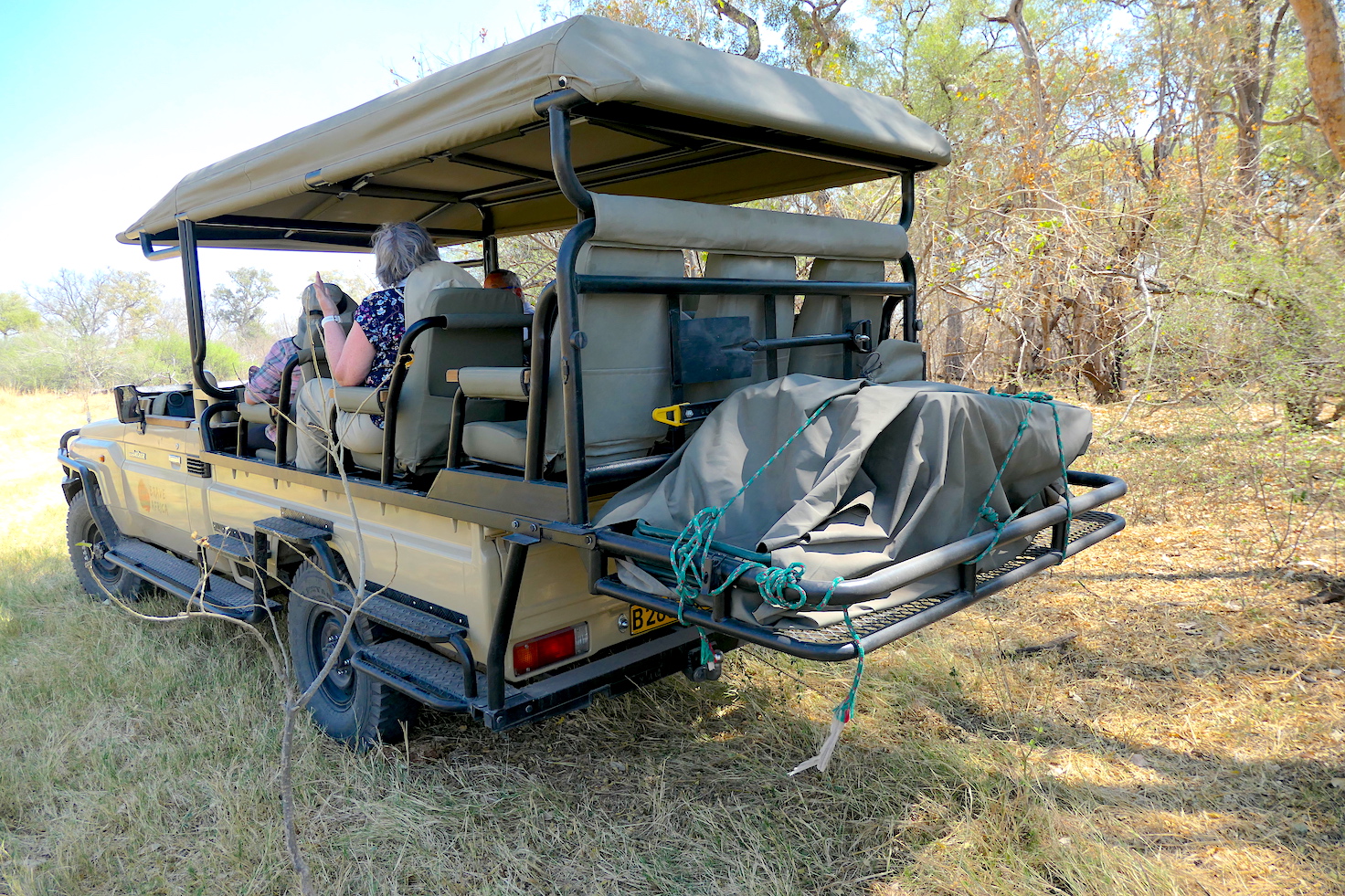
We built a custom storage rack onto the back of every Brave Africa safari vehicle. This rack can be used to store guest luggage, tables, chairs, and more.
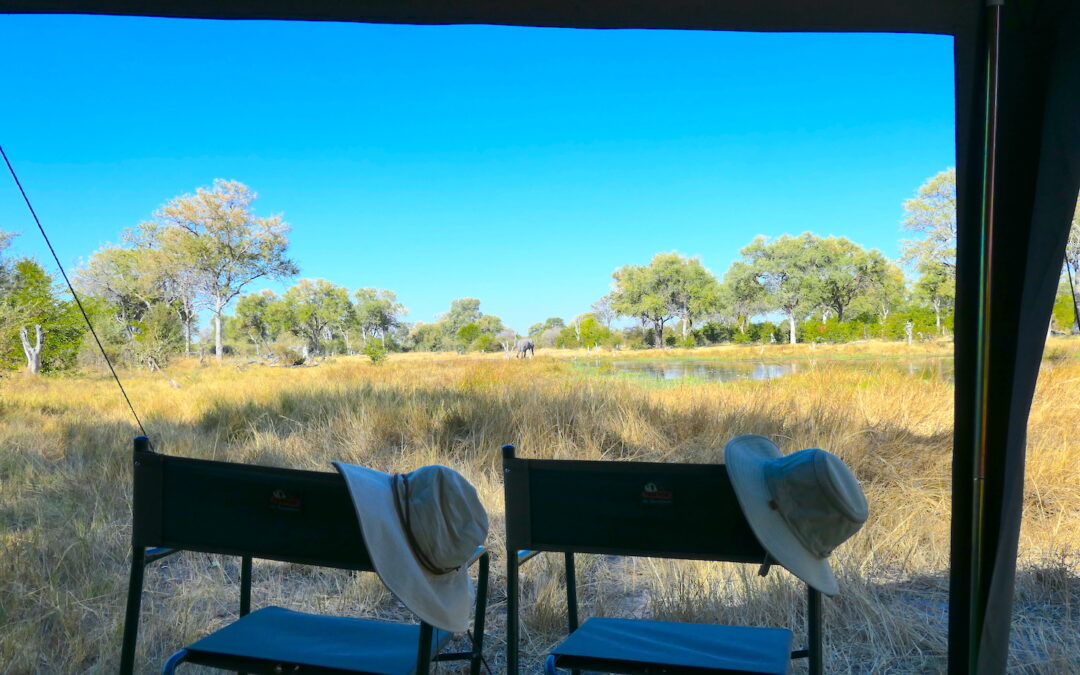
Aug 3, 2019 | Adventure Safari, Brave Africa Safari, Safari Tips
If you’re getting ready to plan your first safari in Botswana, you’re probably concerned about the cost. You’ve heard tales about how Botswana is the most expensive location to safari even as it’s also considered the best.
So, what can you expect when it comes to the cost of a safari in Botswana? Is it only affordable for the wealthy?
We won’t lie and say that going on safari is cheap, but it’s not as expensive as you might think. By choosing the right flights, time of year, and safari experience, you can still have the experience of a lifetime at a price that’s less than you might expect.
Cost of Botswana Safari International Flights
When you first start planning your trip to Africa, you’re probably concerned about the price of plane tickets. After all, it’s expensive to fly short flights. How much more costly is a flight to Botswana?
The U.S. to South Africa — USD $800 – $1400 Round-Trip
If you’re coming from the U.S., there are many options for getting to Johannesburg, South Africa. It all depends on where you’re coming from. In most cases, you’re going to want to make your way to the East Coast.
JFK New York is a popular airport, and right now, flights on Kenya Airways and through Nairobi are just $886 for a round-trip. Going through Los Angeles, you can expect to pay only $1,033 on Qatar Airways through Doha.


Europe to South Africa — USD $663 – $950 Round-Trip
If you’re traveling from Europe, you can expect flights to be a little bit cheaper. From Frankfurt, a flight on Ethiopian Air is just $663 round trip, and on Lufthansa, it’s $916.
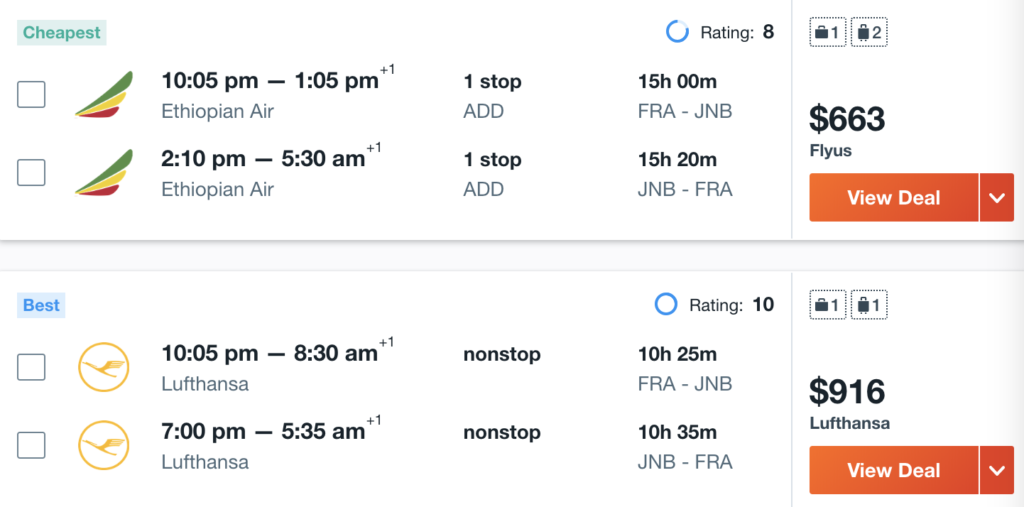
Australia to South Africa — USD $1150 – $1500 Round-Trip
From Australia to South Africa, you can expect similar prices as the U.S. Nonstop flights start around $1250 on Qantas Airways.

Flights to Maun — USD $200 – $350 One-Way
Once you make it to South Africa, you then have to take another short international flight—two hours—to get to Maun, Botswana. While Air Botswana is typically your most affordable option, we recommend flying South African Airways for a better guarantee of your flight arriving on time.
Here’s what you can expect to pay to fly to and from Maun, Botswana:
- Johannesburg to Maun: USD $200 – $300 one-way
- Cape Town to Maun: USD $275 – $350 one-way
Flights to Victoria Falls —USD $250 – $319 One-Way
If you decide to visit Victoria Falls before or after your safari, you’ll need flights to or from Victoria Falls:
- Johannesburg to Victoria Falls: USD $250 – $319 one-way
Bush Flights — USD $430 – $600 Round-Trip
Going on safari in Botswana is unique in Africa in terms of travel. While in South Africa, Kenya, and Tanzania, it’s common to drive to your safari camp, in Botswana, that’s not the case.
The remoteness of Botswana’s safari destinations means that driving isn’t a choice for most travelers. It would take up too much time and require a four-wheel-drive vehicle. That’s why bush flights are the popular choice for travelers and safari camps alike.
The good news is that there are many options for chartered bush flights, including:
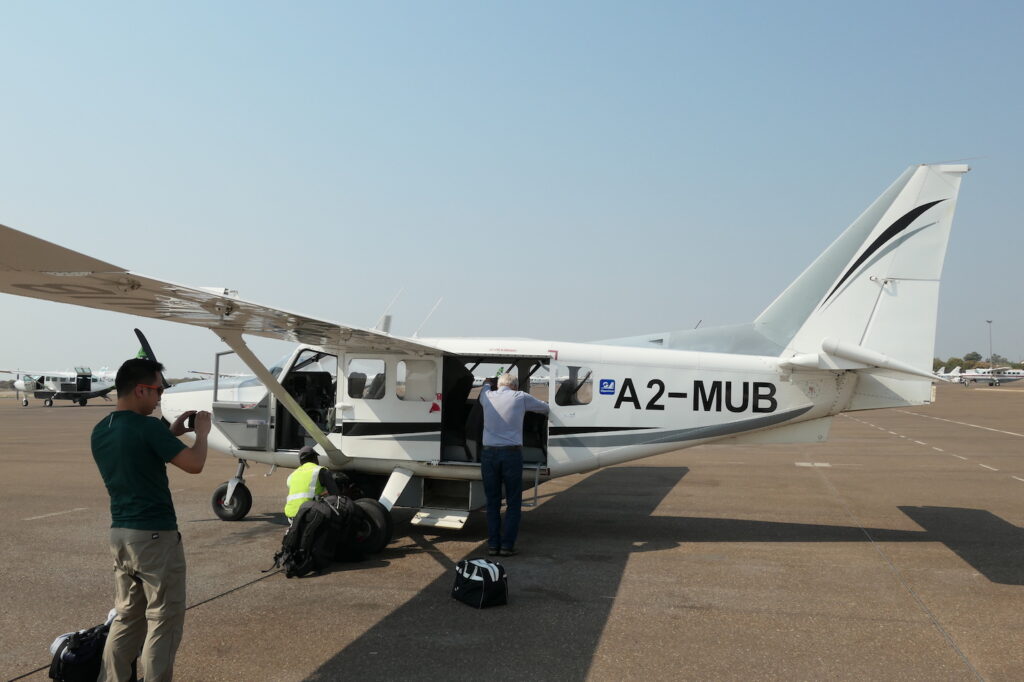
So, what’s the exact cost of Botswana safari bush flights? Your travel agent will, most likely, include it in the total price of your safari. But, if you decide to book your own bush flights in Botswana, we talked to Mack Air to get their 2019/2020 rates.
Maun is your most likely departure point. It’s the most accessible destination to fly to from Johannesburg or Cape Town, which is most likely where you’ll enter Africa for your international flight. The good news is that since Maun is such a popular starting off point, prices are relatively affordable.
- Maun to Xakanaxa: USD $215 per person
- Maun to Khwai: USD $215 per person
- Maun to Savuti: USD $217 per person
However, if you’re coming from or heading to Victoria Falls before or after your safari, then you might use the Kasane airport instead. Due to the airport’s location as well as its less frequent use, flights to and from Kasane are slightly more expensive.
- Kasane to Xakanaxa: USD $372 per person
- Kasane to Khwai: USD $372 per person
- Kasane to Savuti: USD $357 per person
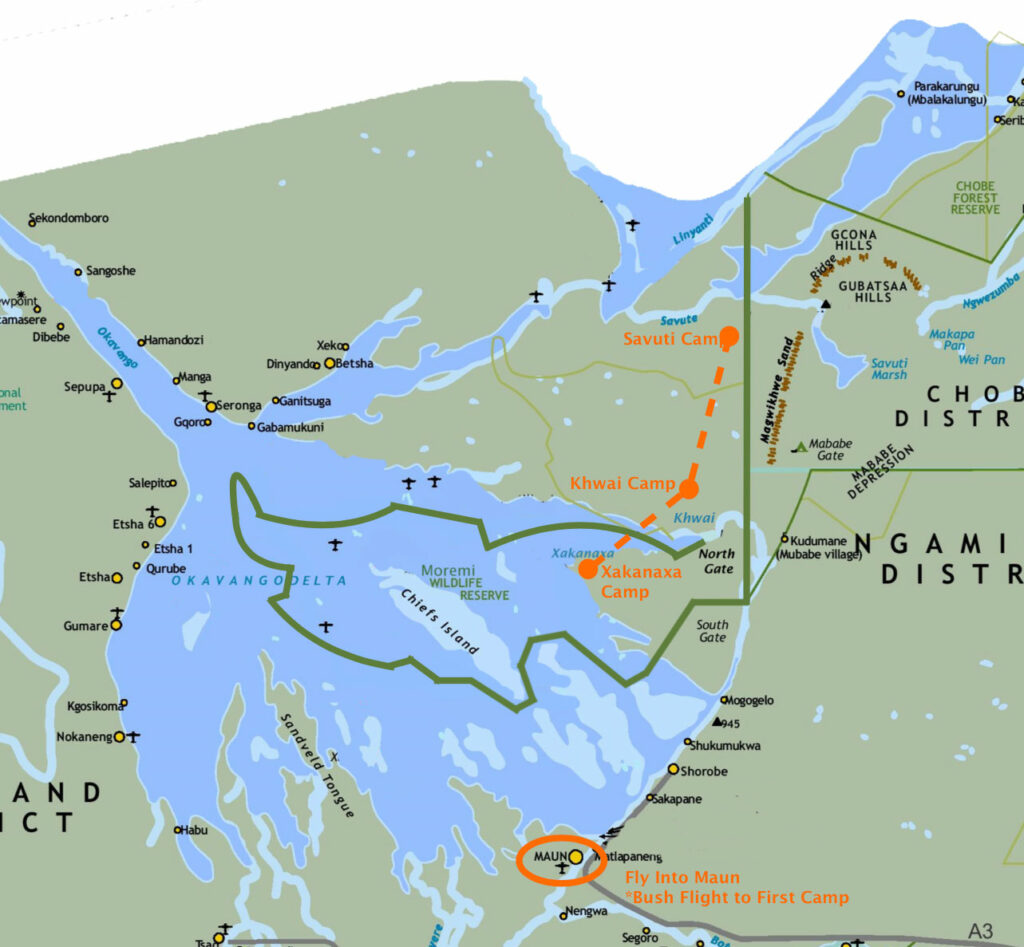
The Cost of a Safari in Botswana
After paying for flights, the only thing you have to worry about is the cost of your safari in Botswana.
The great news about a safari is that it’s all-inclusive. There’s no paying for a hotel and then paying for your food and activities separately. After just a few days, you might not realize how quickly it all adds up.
According to recent surveys of Americans on vacation, each day, on average, you can expect to pay:
- $258 — for a hotel room in a large city such as New York City
- $59 — for a car rental
- $50 — for food
- $100 — all-day activity/tour
That’s a total of $467 per day + $159 per day for every additional person. So, for two people, that equates to $608 per day on average for an international trip. That’s $6,080 for 10-days for a couple.
Now, that price can increase or decrease significantly depending on where you’re heading for a vacation. The more remote the destination or popular the city, the more you can expect to pay.
A safari with Brave Africa isn’t that much more expensive. Our per-person price includes:
- Accommodations
- All meals, snacks, and house beverages (including unlimited alcoholic drinks)
- Laundry
- Road transfers from the nearest airstrip and between our camps
- National park fees
- Emergency medical evacuation insurance
- All-day game drives and professional guiding
For all of that, you can pay as little as $880 per couple per day for a ten-day/nine-night safari in Botswana. That’s barely $270 more per day for a trip of a lifetime.

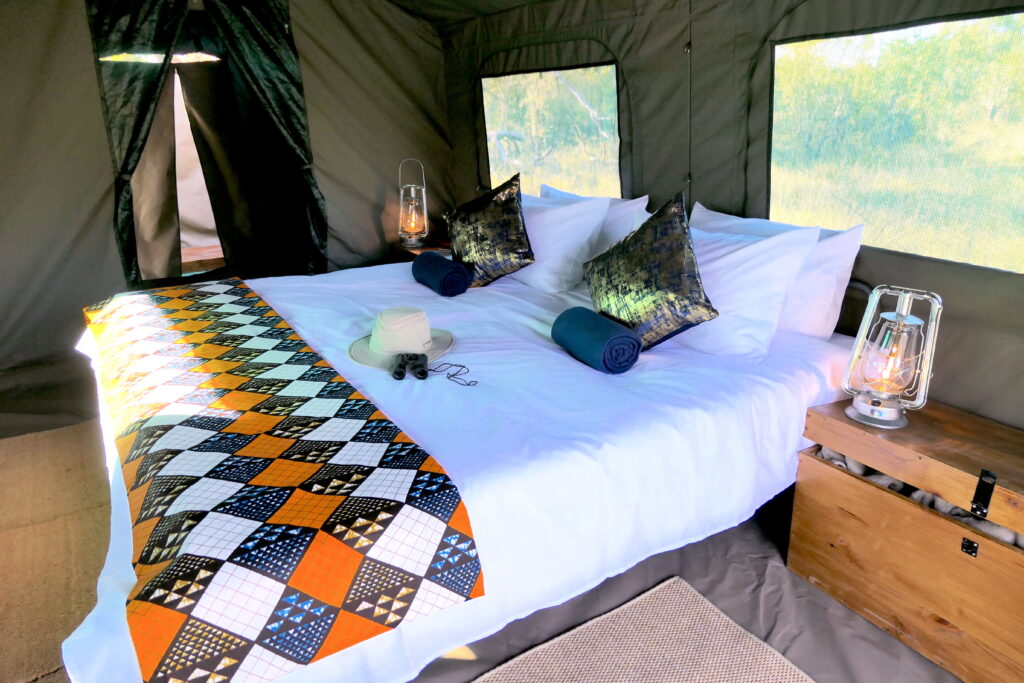
Total Cost of a Botswana Safari
So, when you add everything up, how much does it cost to go on safari in Botswana for a couple? Let’s add it up.
- International Flights: $2000 per couple
- Maun Flights: $1000 per couple
- Bush Flights: $1000 per couple
- 10-Day Safari: $10,000 per couple (shoulder rack)
Total Cost of a 10-Day Safari in Botswana for Two: USD $14,000
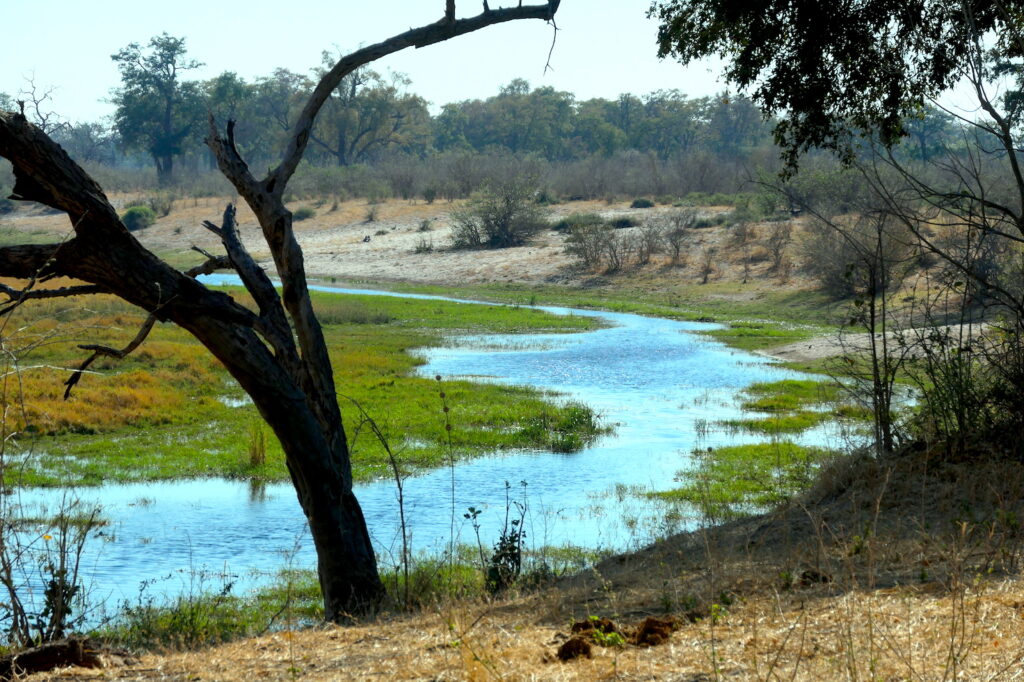
And while that might seem expensive, let’s compare it to a trip to Disney World. This is a fairly decent comparison because you pay a daily fee for all-day activities, aka park tickets and hotels are at a premium on property. We planned a 9-night/10-day vacation and chose the average prices for comparison.
- Hotel: $350/night — $3,150 total
- 10-Day Tickets: $1100 per couple
- 10-Day Dining Plan: $1300 per couple
- International Flights: $2000 per couple
Total Cost of a 10-Day Trip to Disney World in Orlando, FL: USD $7,550
So, would you rather pay half as much and go to Disney World like everyone else or pay a little more and go on a trip that will change your life?
And if you’d like to save some money on flights, we’re writing a blog in a few weeks about using just 80,000 points per person for a round trip flight to South Africa. That’s a $2000 savings! So stay tuned!









































